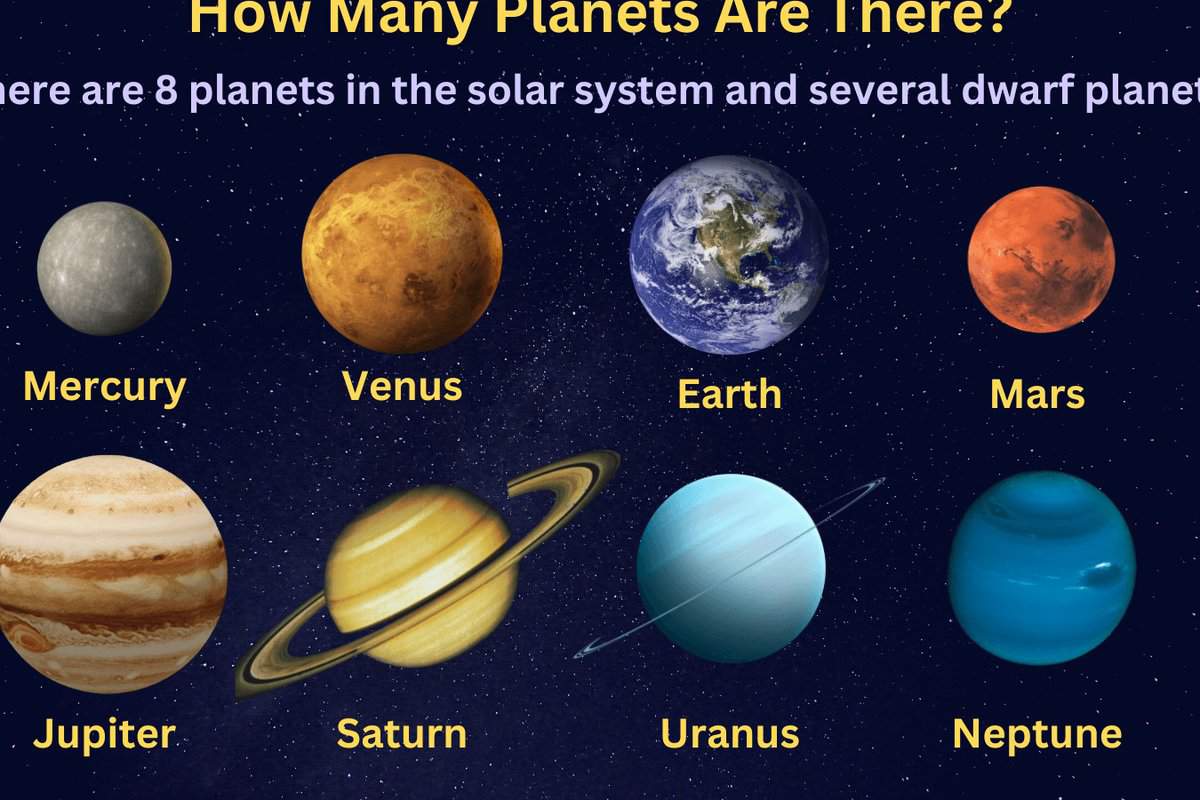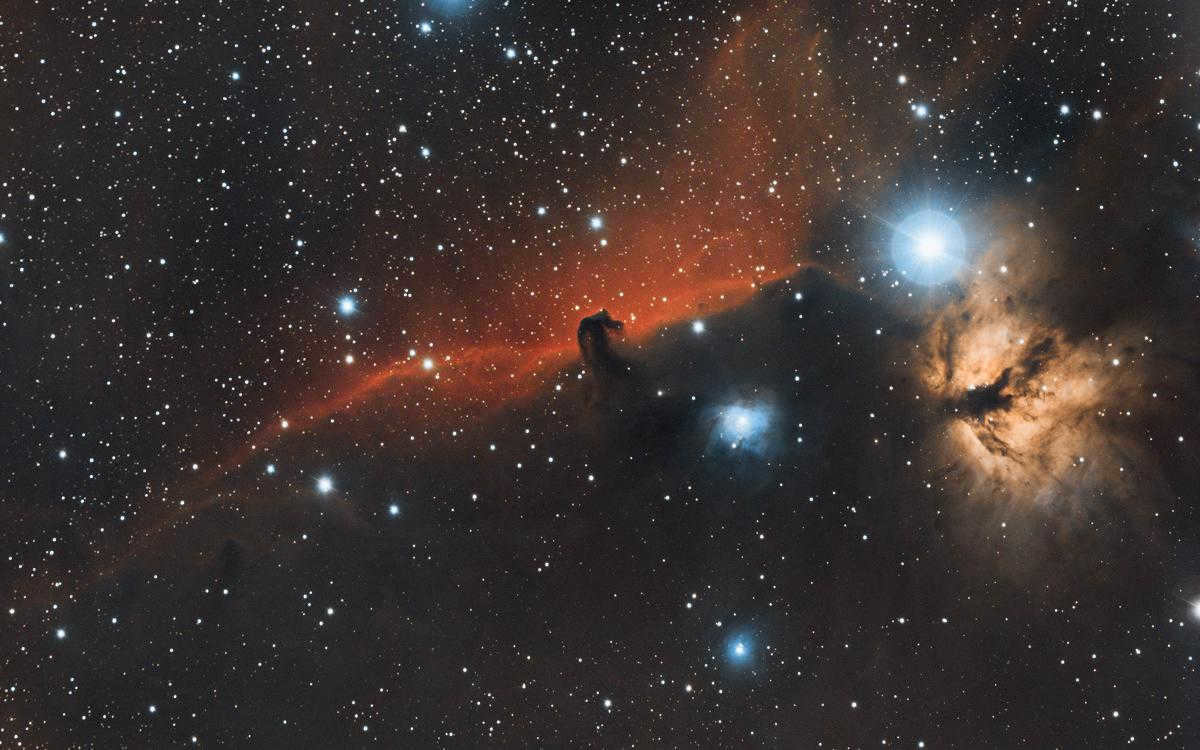
In the past, it was commonly accepted that there were nine planets in the solar system. However, in 2006, the status of Pluto as a planet was revoked. Nevertheless, scientists now propose the existence of another celestial body that could potentially fill the gap.
What’s the current situation? According to initial estimations, the global space industry is projected to generate $1 trillion in revenue by the year 2040. Apart from advancements in astronomy, the exploration of space also leads to the development of new drugs and technologies. It allows humanity to gain a better understanding of its position in the universe and explore questions concerning the origins of life and the potential existence of extraterrestrial beings.
- The celestial object must orbit around the Sun.
- The object needs to possess sufficient mass to overcome the forces of a rigid body, resulting in it taking on a nearly spherical form.
- The object should be able to maintain a clear orbit, devoid of any other observable celestial bodies aside from its satellites.
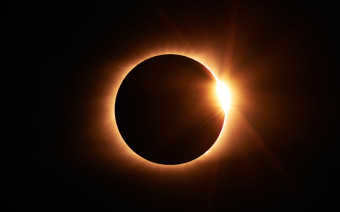
A distant and massive planet
There is a hypothetical planet called “Planet 9” that is believed to be different from small objects like Pluto. Scientists have conducted detailed modeling and have proposed that its mass should be between four to eight times that of Earth. Moreover, it is expected to be situated at a considerable distance from the Sun – at least ten times farther away than Pluto.
If there is indeed a celestial body known as “Planet 9”, it would possess a unique classification that sets it apart from any other known entity within our solar system. Our neighboring celestial bodies can be categorized into two distinct types: the terrestrial planets, which consist of small rocky worlds with solid surfaces such as Mercury, Venus, and Mars, and the gas giants, which include Jupiter, Saturn, Uranus, and Neptune. “Planet 9” would occupy a position that falls between these established classifications. It is plausible that this enigmatic celestial body could be classified as a super-Earth, signifying a rocky planet of larger proportions than our own Earth, or alternatively, it could be classified as a sub-Neptune, indicating a gaseous world that is slightly smaller in size when compared to Neptune.
Challenges in detecting
Discovery of Planet 9 remains elusive thus far. Given its remote position, it is likely to appear dim, necessitating the use of highly advanced telescopes for its detection. Nevertheless, these telescopes typically offer a limited field of view. Astrophysicists Hector Socas-Navarro and Ignacio Trujillo Cabrera from the Canary Institute of Astrophysics suggest that attempting to locate a new planet using such telescopes is akin to using a microscope to search for a missing ring in an entire apartment.
An extraordinary asteroid
In November 2022, scientists from Harvard University made a groundbreaking revelation: the CNEOS14 meteorite, which crashed into the Pacific Ocean in 2014, is believed to have originated from outside our solar system. This astounding discovery suggests that it could be the very first interstellar object ever detected by humans.
The tiny asteroid, measuring only a meter across, crashed into Earth while traveling through the solar system at a velocity of 60 km/s. It was this impressive speed that allowed scientists to speculate about its origin. They also needed to eliminate the possibility that the object was influenced or diverted by the gravitational pull of any of the planets in the solar system. Hector Socas-Navarro and Ignacio Trujillo Cabrera elaborate, “This can be easily verified by reconstructing the asteroid’s path and determining if it came close to any of the planets. However, what if CNEOS14 interacted with a planet that is currently unknown to us during its journey through the solar system? That is the exact question we posed to ourselves.”
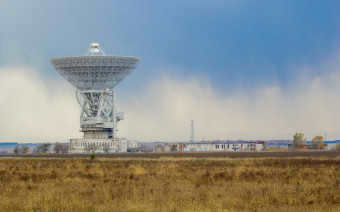
Unbelievable Coincidence
By mapping the trajectory of a potential “Planet 9” onto a sky map and then overlaying the path of CNEOS14, scientists have made an astonishing discovery. They have found a striking correlation between the origin of the meteorite and the region where “Planet 9” is hypothesized to exist. After conducting further calculations, the researchers have determined that there is a 99.9% chance that CNEOS14 passed by an unidentified massive object in the outer solar system between 30 and 60 years ago, which redirected its course towards Earth. This unidentified celestial body may very well be the elusive Planet 9. In order to validate their findings, Hector Socas-Navarro and Ignacio Trujillo Cabrera plan to observe the area through telescopes, which has now been significantly narrowed down.
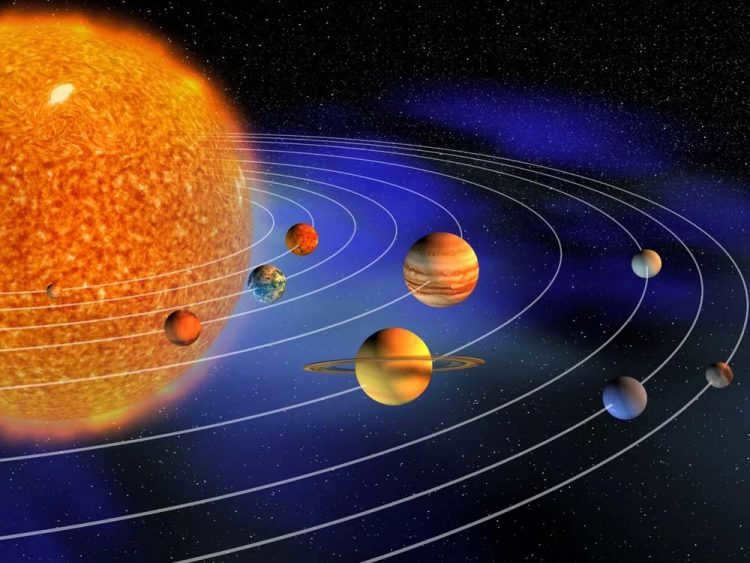
- Galactic system
Galactic system – is a typical planetary system that includes a central star, known as the Sun – and all the natural celestial bodies orbiting around it. It was formed through the gravitational compression of a gas-dust cloud approximately 4.57 billion years ago.
The galactic system is a part of the Milky Way galaxy, which has a structure resembling a disk with a diameter of 100,000 to 120,000 light-years and a thickness of 1,000 light-years. It is estimated to contain around 400 billion stars. The galactic system is believed to have originated 13 billion years ago and, throughout its evolution, developed a unique structure that is not replicated anywhere else in the Universe.
The galactic system’s position within the galaxy
Located in the Orion constellation, the system is situated in the inner arm. It orbits around the galactic nucleus at a speed of 250 kilometers per second, accompanied by its member celestial bodies. A complete revolution around the galaxy takes 225 million years, equivalent to one galactic year.
The majority of the Solar System’s mass (99.87%) is concentrated in the Sun. In addition, the Sun is significantly larger than any planet in its system. Even Jupiter, which is 11 times bigger than Earth, has a radius 10 times smaller than that of the Sun. Being an ordinary star, the Sun emits light due to its high surface temperature. On the other hand, the planets shine through reflected sunlight (albedo) as they are relatively cold.
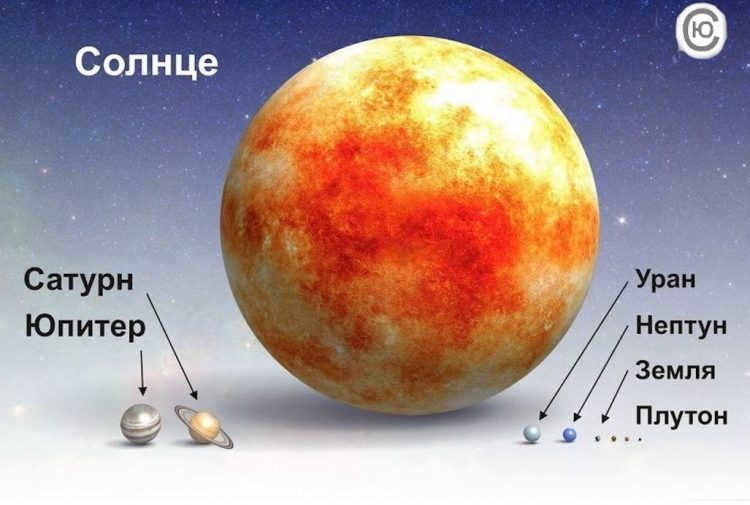
The dimensions of the planets in the galaxy
They are organized in the following sequence starting from the Sun: Mercury, Venus, Earth, Mars, Jupiter, Saturn, Uranus, Neptune. and the minor planet Pluto.
Most large objects circling the Sun move on essentially the same plane, known as the the ecliptic plane.. Meanwhile, comets and Kuiper Belt objects frequently have significant angles of inclination to this plane.
Scientists also classify the planets of the galaxy into two categories:
The composition of the galaxy has a significant impact not only on the planets, but also on their satellites, asteroids, comets, and the countless meteoric elements that are also part of it.
Composition of the Solar System
The Sun
The Solar System is made up of various celestial bodies, with the Sun being the central and most important one. The Sun is a star, and it is an incredibly large and powerful one at that. It is composed primarily of hydrogen and helium, which are the two most abundant elements in the universe.
The Sun’s interior is made up of several layers, including the core, radiative zone, and convective zone. The core is where nuclear fusion occurs, converting hydrogen into helium and releasing a tremendous amount of energy in the process. This energy is what powers the Sun and allows it to emit light and heat.
Surrounding the Sun is the photosphere, which is the visible surface of the star. This is the layer that emits the light and heat that we see and feel on Earth. Above the photosphere is the chromosphere, which is a thin layer of gas that gives off a reddish glow during solar eclipses. The outermost layer of the Sun’s atmosphere is the corona, which is much hotter than the surface of the Sun itself.
In addition to the Sun, the Solar System also includes several other types of celestial bodies. There are eight planets, including Mercury, Venus, Earth, Mars, Jupiter, Saturn, Uranus, and Neptune. These planets vary in size, composition, and distance from the Sun.
There are also dwarf planets, such as Pluto, which was reclassified as a dwarf planet in 2006. Dwarf planets are similar to planets, but they have not cleared their orbits of other debris. Other celestial bodies in the Solar System include moons, asteroids, comets, and meteoroids.
Overall, the Solar System is a complex and fascinating place, with the Sun at its center. Understanding the composition and characteristics of the Sun and the other celestial bodies within the Solar System helps us to better understand our place in the universe.
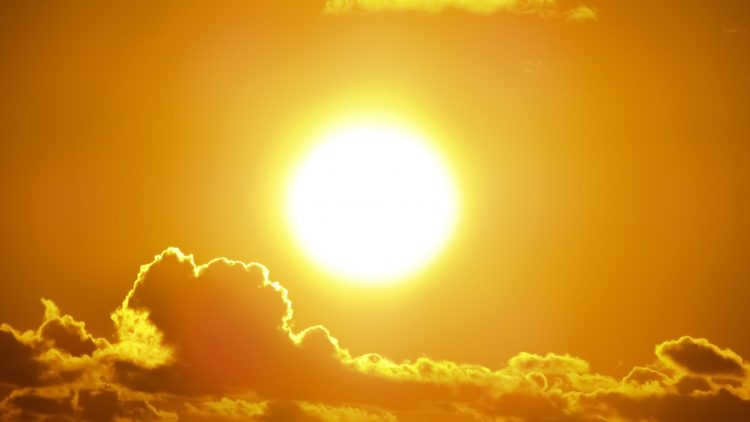
The Sun is an essential celestial body that sustains life on our planet. It provides us with vital energy and warmth. In terms of stellar classification, our Sun is categorized as a yellow dwarf. It is estimated to be around 5 billion years old. The Sun’s equatorial diameter measures a staggering 1,392,000 kilometers, which is 109 times larger than the diameter of Earth. Moving at a velocity of 250 km/s, our star travels through space, orbiting around the galactic center, which is located approximately 26,000 light years away. It takes the Sun approximately 180 million years to complete one revolution.
As for its rotational characteristics, the Sun completes a rotation at the equator in 25.4 days, while it takes 34 days to rotate at the poles. The core of the Sun reaches an incredibly high temperature of around 15 million degrees Celsius, whereas the surface temperature averages at around 5500 degrees Celsius.
The star’s chemical composition primarily consists of hydrogen and helium. It functions as a massive fusion reactor. The Sun’s position on the main sequence indicates that it has not yet depleted its hydrogen supply for nuclear fusion and is approximately halfway through its lifecycle.
Presently, the Sun is progressively growing brighter; during earlier phases of its evolution, its luminosity was merely 70% of its current level.
Now, let’s explore the number of planets orbiting the Sun within our solar system and the unique characteristics of these planets.
Space between planets
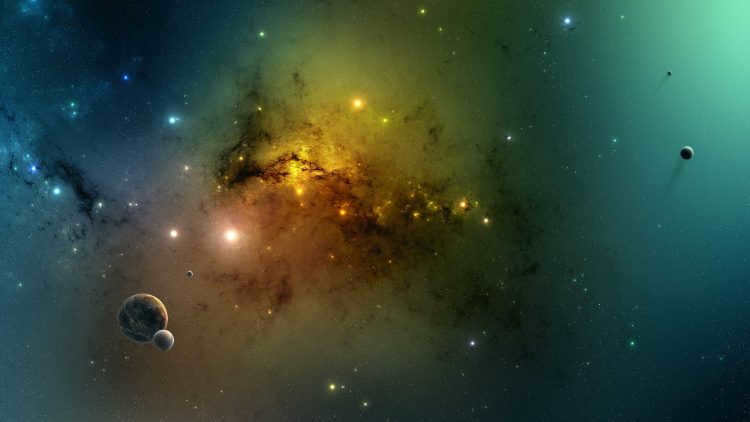
In addition to emitting bright light, the yellow star releases a continuous flow of charged particles. This flow, known as the “solar wind,” travels at a speed of 1.5 million kilometers per hour and forms the region near the sun called the heliosphere. These particle streams can strip away the atmospheres of celestial bodies that lack magnetic fields, as has occurred with Venus and Mars.
Cosmic rays originate from outside our solar system.
The density of cosmic rays in the interstellar medium as well as the strength of the Sun’s magnetic field both vary over time. As a result, the level of cosmic rays within the solar system fluctuates, although the extent of these variations is not entirely known.
The interstellar space is where at least two disk-shaped areas of cosmic dust are created.
Planets and their moons
Group of Earth
Mercury
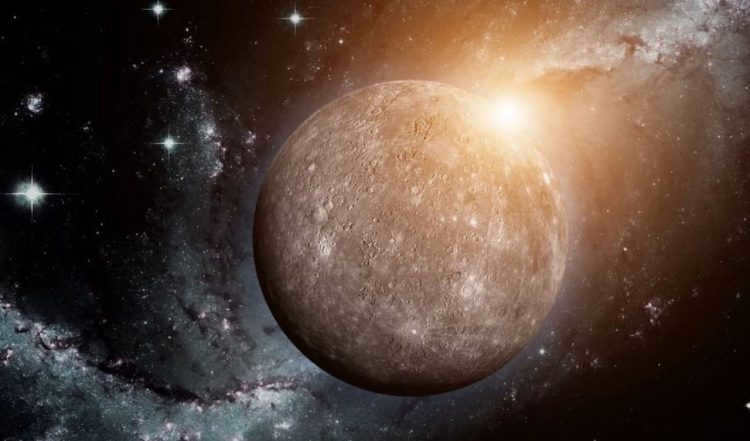
The planet closest to the Sun, despite being the smallest among all the planets (with a mass of 0.055 times that of Earth), has some unique characteristics. It rotates very slowly on its axis, completing only one and a half revolutions for each revolution it makes around the Sun. Unlike other planets, Mercury lacks both atmosphere and satellites. Its surface temperature can reach a scorching +430 °C during the day and drop down to a freezing -180 °C at night.
Aside from impact craters, Mercury’s surface relief is marked by the presence of numerous lobate-shaped scarps that stretch across hundreds of kilometers. It is believed that these scarps were formed in the early stages of the planet’s history due to tidal deformations.
Mercury possesses an incredibly thin atmosphere composed of atoms that have been “blown” off its surface by the solar wind. The planet’s relatively large iron core and its thin crust still pose a mystery that scientists have yet to fully comprehend.
Venus
There is a theory proposing that a massive impact resulted in the removal of the planet’s outer layers, which were made up of lighter elements, leading to a reduction in the planet’s size.
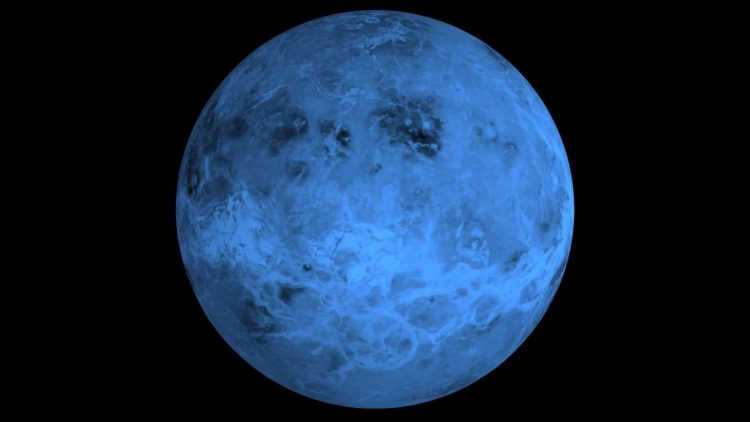
Venus, often called Earth’s sister, is the most romantic planet closest to our home planet. However, it is not suitable for human habitation. Venus is enveloped in a dense layer of carbon dioxide clouds, and its surface experiences scorching temperatures that can reach up to 475 degrees Celsius. The surface of Venus is marked with numerous craters, and the atmospheric pressure is over 90 atmospheres.
Venus shares similarities with Earth in terms of size and mass. It has a solid silicate shell covering an iron core, and there are indications of its internal geological activity. Nevertheless, Venus has significantly less water compared to Earth, and its atmosphere is much denser.
While Venus does not show any obvious evidence of contemporary geological activity, the absence of a magnetic field implies that its thick atmosphere is likely being replenished through periodic volcanic eruptions.
Planet Earth
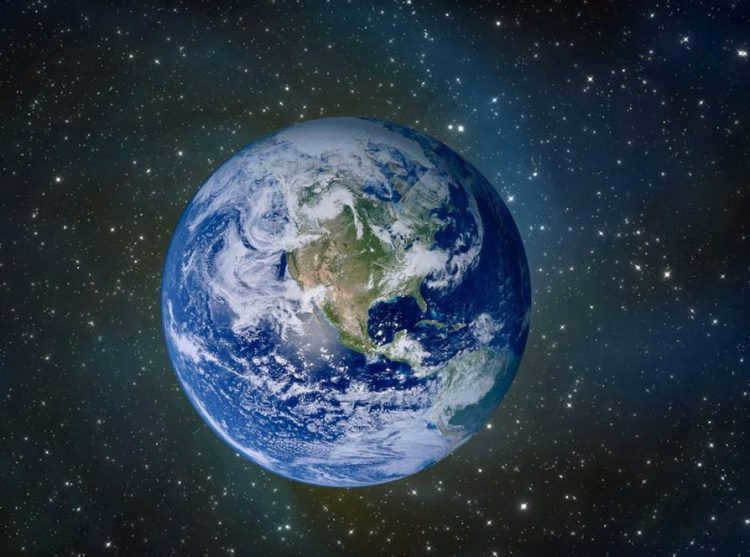
Earth, the largest and most compact planet in the Earth group, possesses plate tectonics. The inquiry into the existence of life outside of Earth remains unresolved. Within the Earth group, Earth stands out as one-of-a-kind (mainly because of its hydrosphere). The Earth’s atmosphere differs significantly from those of other planets as it contains freely available oxygen. Additionally, the Earth possesses a single natural satellite – the Moon, the sole significant satellite among the planets in the Earth group within the solar system.
Red Planet
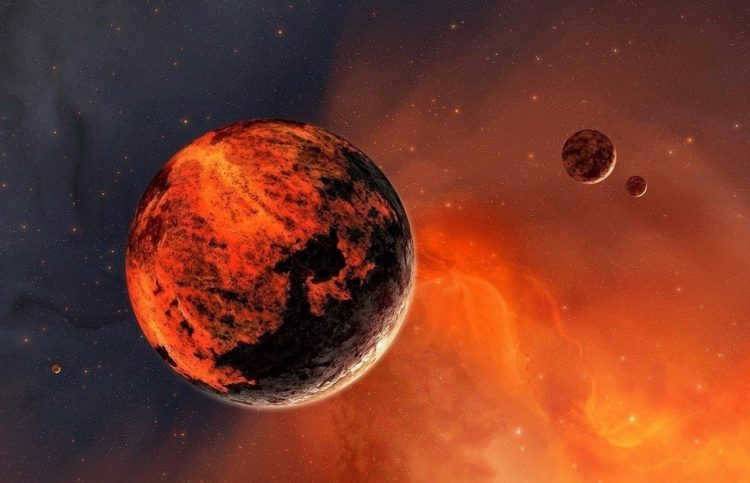
Mars is smaller in size compared to Earth and Venus, with a mass equal to 0.107 times that of Earth. Despite its smaller size, Mars shares structural similarities with our planet. Its radius is half that of Earth, and its mass is significantly smaller. The planet has an atmosphere primarily composed of carbon dioxide, with a surface pressure measuring 6.1 mbar, which is only 0.6% of Earth’s atmospheric pressure.
Mars features volcanoes on its surface, with the largest one being Olympus, surpassing the size of all terrestrial volcanoes and reaching an impressive height of 21.2 kilometers. The presence of rift depressions, such as the Mariner valleys, along with the volcanoes, serve as evidence of past geological activity. In fact, some data suggests that this activity may have continued even within the last 2 million years. The red hue of Mars’ surface is attributed to a high concentration of iron oxide in its soil.
Mars, after Earth, is currently the most extensively researched planet in our solar system.
Enormous planets
Jupiter
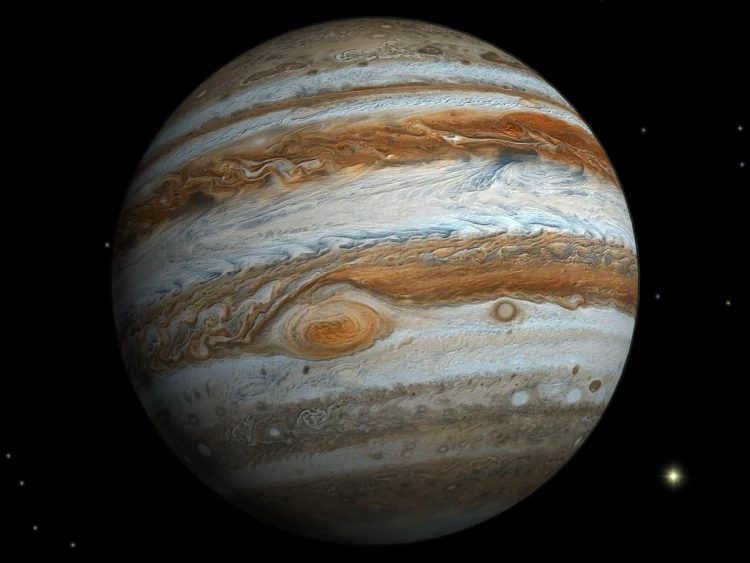
Jupiter is the largest gas giant planet in our solar system. If it had a mass tens of times greater, it could potentially become a star.
Jupiter’s mass is 318 times that of Earth, making it 2.5 times more massive than all the other planets combined.
It is primarily composed of hydrogen and helium. Jupiter’s high internal temperature gives rise to various semi-permanent vortex structures in its atmosphere, including cloud bands and the iconic Great Red Spot.
A day on Jupiter lasts approximately 10 hours, while a year is completed in just 12 Earth hours. Like Saturn and Uranus, Jupiter also has a system of rings, although they are not as prominent and may not be easily noticeable from a distance.
Jupiter is orbited by 79 moons. The four biggest ones – Ganymede, Callisto, Io, and Europa – resemble the terrestrial planets with features like volcanic eruptions and internal heating.
Ganymede, the largest moon in the entire solar system, is even bigger than Mercury.
Saturn
Saturn is the sixth planet from the Sun and the second-largest in the Solar System, after Jupiter. It is a gas giant with an average radius about nine times that of Earth. Saturn is named after the Roman god of agriculture and wealth. Its atmosphere is primarily composed of hydrogen and helium, and it has a prominent ring system that consists of nine continuous main rings and three discontinuous arcs.
Saturn is known for its beautiful and distinct ring system, which is made up of ice particles, rocks, and dust. These rings are believed to have formed from the debris of a moon or comet that was torn apart by Saturn’s gravity. The rings are made up of thousands of individual ringlets, each orbiting Saturn at a slightly different speed.
Saturn has a dense atmosphere that is composed mostly of hydrogen and helium. It is also known for its many storms, including a massive storm called the Great White Spot, which occurs approximately every 30 years. Saturn’s atmosphere is also home to a hexagonal-shaped jet stream at its north pole, which is thought to be caused by the planet’s rotation and the Coriolis effect.
Saturn has a total of 82 known moons, the largest of which is Titan. Titan is the second-largest moon in the Solar System and is larger than the planet Mercury. It is covered in a thick atmosphere and has lakes and rivers of liquid methane and ethane on its surface. Titan is believed to be one of the most likely places in the Solar System to support life, although it would be very different from life on Earth.
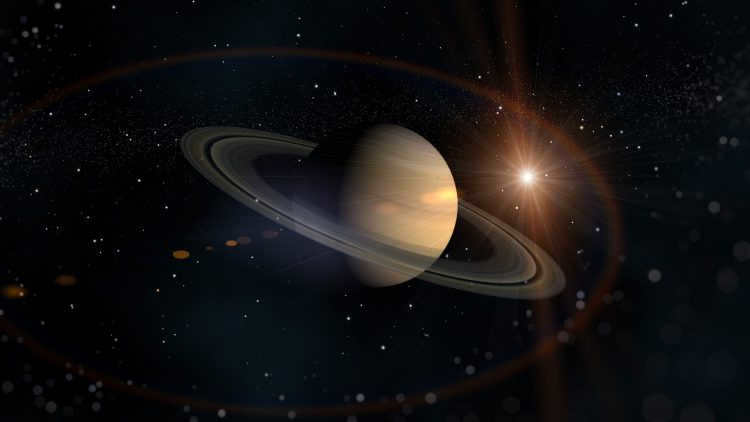
Saturn, renowned for its expansive ring system, possesses a somewhat analogous atmospheric and magnetospheric composition to Jupiter. Despite the fact that Saturn’s volume is 60% of Jupiter’s, its mass (95 Earth masses) is less than a third of Jupiter’s; thus, Saturn is the least dense planet in the solar system (its average density is lower than that of water).
Saturn boasts 82 confirmed satellites; two of them, Titan and Enceladus, display indications of geological activity. However, this activity differs from that of Earth, as it is primarily attributed to ice-related phenomena.
Titan, which surpasses Mercury in size, stands as the sole satellite in the solar system with a substantial atmosphere.
Uranus
can be rephrased as
The planet Uranus
.
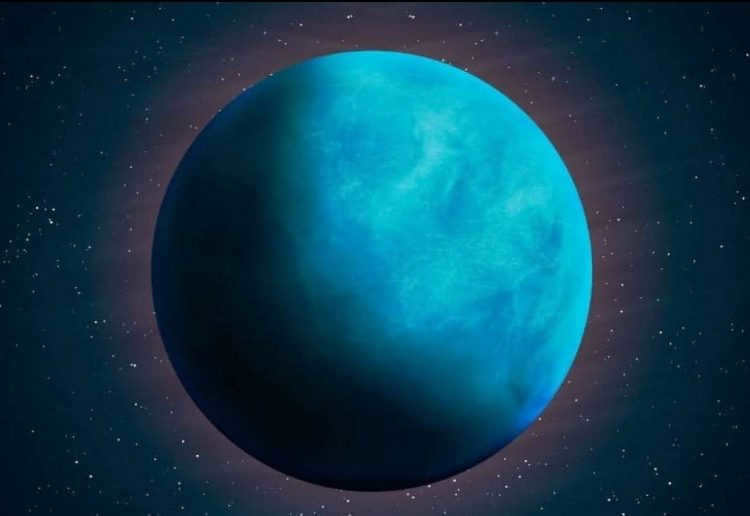
Uranus is the lightest among the giant planets, with a mass 14 times that of Earth. What sets this planet apart is its rotation, which gives it a blue-green appearance. Unlike other planets that spin like wolves, Uranus is more like a rolling ball because its axis of rotation is almost parallel to the plane of the ecliptic. In simpler terms, Uranus lies on its side.
Despite its peculiar rotation, Uranus has 13 rings and 27 companions. Among them, the most famous ones are Oberon, Titania, Ariel, and Umbriel.
Unlike other gas giants, Uranus has a much colder core and emits very little heat into space.
Neptune
Neptune, named after the Roman god of the sea, is the eighth and farthest known planet from the Sun in the Solar System. It is the fourth-largest planet by diameter and the third-largest by mass. Among the gaseous planets in the solar system, Neptune is the most dense. Its atmosphere is primarily composed of hydrogen and helium, along with traces of methane, which give it a blue color. Neptune has a total of 14 known moons, the largest of which is Triton. The planet has a strong magnetic field and numerous storms, including the Great Dark Spot and the Scooter. Neptune was first observed by Galileo Galilei in 1612 but was not recognized as a planet until 1846.
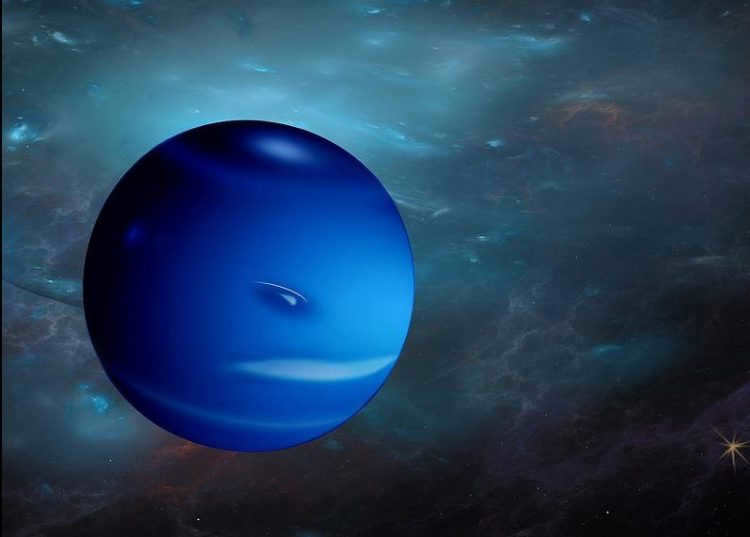
Neptune bears a resemblance to Uranus in terms of its appearance, with its spectrum also being dominated by methane and hydrogen bands. The heat flux emanating from Neptune is noticeably higher than the solar heat it receives, suggesting the presence of an internal source of energy. It is conceivable that a considerable portion of this internal heat is generated by the gravitational pull of its massive companion, Triton, which orbits in a retrograde manner at a distance 14.5 times greater than the planet’s radius. During its flyby in 1989, the Voyager 2 spacecraft came within 5000 km of Neptune’s cloud layer and discovered the planet to have an additional 6 satellites and 5 rings.
The planet number nine
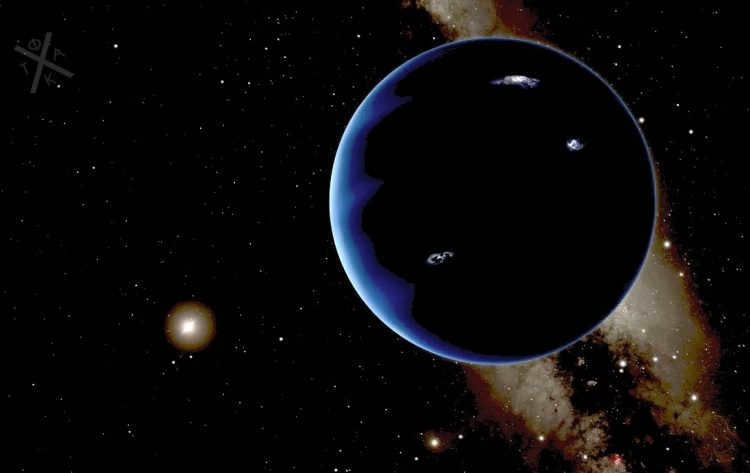

Scientists made an exciting announcement on January 20, 2016, revealing the potential discovery of a ninth planet in our solar system. This mysterious planet lies beyond the orbit of Pluto, and it is believed to be approximately ten times more massive than Earth. Incredibly, it is also positioned about 20 times farther from the Sun than Neptune, at a staggering distance of 90 billion kilometers. Furthermore, this enigmatic planet has an incredibly long orbital period, taking anywhere from 10,000 to 20,000 years to complete one revolution around the Sun. With a confidence level of around 90%, experts strongly believe that this planet truly exists. For now, it is simply referred to as “The Ninth Planet”.
Dwarf planets
Dwarf planets are celestial bodies with a diameter of approximately 1000 km. Among the dwarf planets are Pluto, which was classified as such in 2006, Ceres, the largest object in the main asteroid belt, and Erida, a distant dwarf planet.
Minor objects
The region beyond Neptune known as the Kuiper Belt
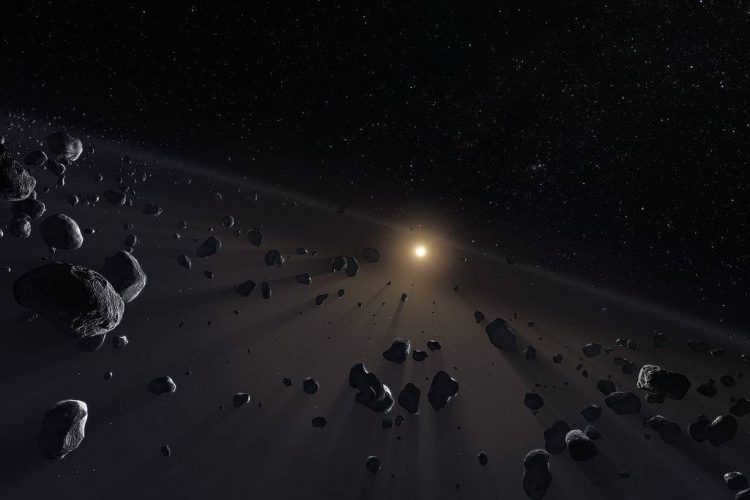
The Kuiper Belt, a region rich in remnants from the solar system’s formation, is a vast expanse of icy debris similar to the asteroid belt. Spanning from 30 to 55 astronomical units from the Sun, it primarily consists of small celestial bodies, although some of the largest objects in the Kuiper Belt, like Kwavar, Varuna, and Orcus, may be reclassified as dwarf planets once their characteristics have been further scrutinized. This region is home to a multitude of small icy bodies, primarily composed of methane, ammonia, and water, although there are also objects that contain rocks and metals.
Space rocks
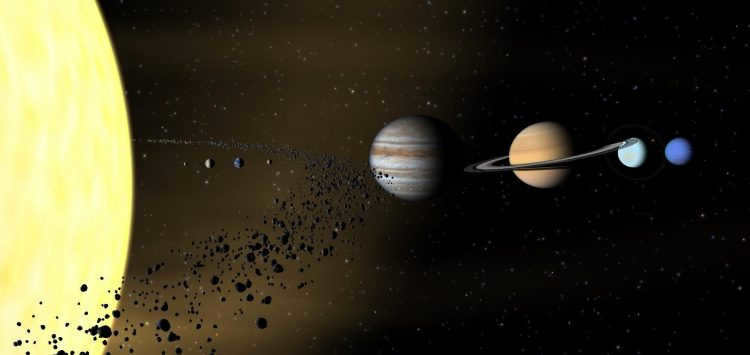
Asteroids are the most prevalent small objects in the solar system.
The asteroid belt is located in the orbit between Mars and Jupiter. According to current theories, asteroids are remnants of the solar system’s formation that were unable to merge into larger bodies due to Jupiter’s gravitational disruptions.
Asteroids vary in size, ranging from a few meters to hundreds of kilometers. They include both extremely small and large ones, such as Vesta and Hygeia. If they can demonstrate hydrostatic equilibrium, they may even be reclassified as dwarf planets.
Meteors and meteorites
Meteors and meteorites are both fascinating celestial phenomena that capture the imagination of people all over the world. These terms are often used interchangeably, but they actually refer to different aspects of the same event. A meteor is the luminous phenomenon that occurs when a meteoroid enters the Earth’s atmosphere and burns up, creating a streak of light in the sky. On the other hand, a meteorite is the solid fragment that survives its passage through the atmosphere and lands on the Earth’s surface.
Meteors are commonly known as shooting stars or falling stars because of their appearance as they streak across the night sky. They can be seen on clear nights when the sky is dark and free from light pollution. The bright light emitted by meteors is caused by the intense heat generated as the meteoroid travels through the atmosphere at high speeds. Most meteors are small, ranging in size from a grain of sand to a pebble, and they burn up completely before reaching the ground.
Meteorites, on the other hand, are the remnants of meteors that have survived their journey through the atmosphere and have landed on the Earth’s surface. They can vary in size from small pebbles to large boulders and can be found in various parts of the world. Meteorites are valuable to scientists because they provide valuable insights into the composition and history of our solar system. They can contain rare elements and minerals that are not found on Earth and can provide clues about the formation and evolution of planets and asteroids.
In conclusion, meteors and meteorites are both fascinating phenomena that occur when a meteoroid enters the Earth’s atmosphere. Meteors are the streaks of light that we see in the sky, while meteorites are the solid fragments that land on the Earth’s surface. Both meteors and meteorites provide valuable information about our solar system and can help scientists better understand the universe we live in.
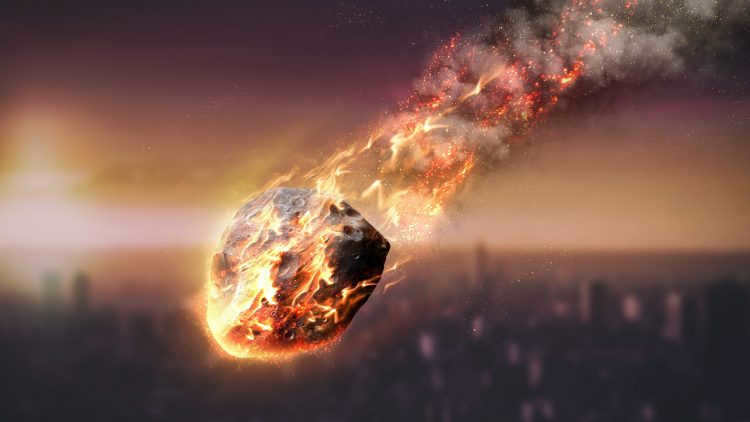
Meteorites are space objects of small size that periodically enter the Earth’s atmosphere and become meteors upon impact. Upon entering the Earth’s atmosphere, they burn up in the air before a small portion falls to the surface.
Comets
can be described as cosmic objects made up of ice, dust, and gas. They orbit the Sun and can be seen from Earth when they come close enough. These celestial bodies have been a subject of fascination and study for centuries. Comets are believed to be remnants from the early solar system and can provide valuable information about its formation. They often have a distinct appearance, with a glowing coma and a tail that points away from the Sun. Scientists continue to study comets to learn more about their composition, behavior, and origins.
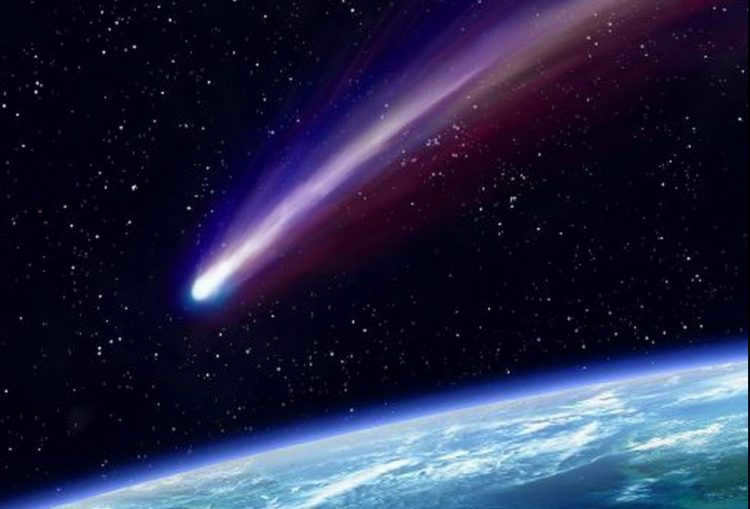
If you translate this term from Greek, it actually means “having long hair”. And indeed, when this icy wanderer approaches the Sun, it releases a lengthy tail composed of evaporating gases that stretches for hundreds of millions of kilometers.
The comet also possesses a head, comprising of a nucleus and a coma. The nucleus is a frozen block of icy gases with traces of silicates and metal particles. It is possible that certain organic compounds are also present. The coma, on the other hand, refers to the gas and dust atmosphere surrounding the comet.
Distant regions
The issue of precisely defining the point at which the Solar System transitions into interstellar space is unclear.
Two crucial factors in this determination are the solar wind and solar gravity. The heliopause marks the outer limit of the solar wind. Beyond this boundary, the solar wind and interstellar matter merge and blend together.
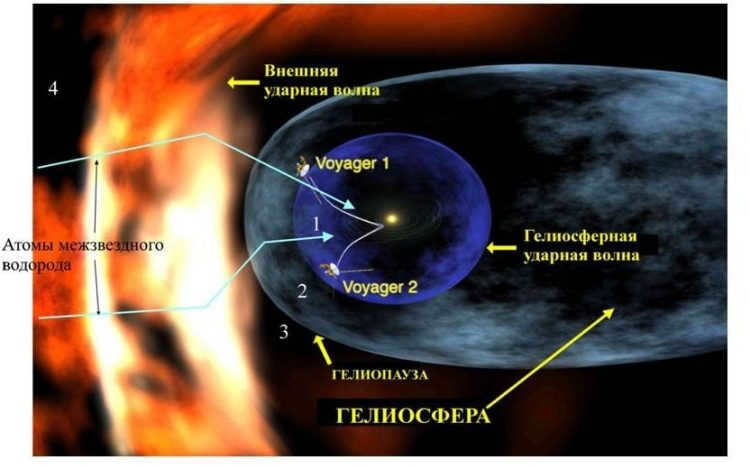
The heliopause is located approximately four times further than Pluto and is considered to mark the beginning of the interstellar medium.
However, there is a hypothesis that suggests the existence of the Hill sphere, which is a region where the gravitational pull of the Sun outweighs the gravitational pull of the galaxy, and this region extends a thousand times further.
There is still much unknown about our solar system. It is estimated that the Sun’s gravitational field dominates over the gravitational forces of nearby stars up to a distance of approximately two light-years (125,000 astronomical units).
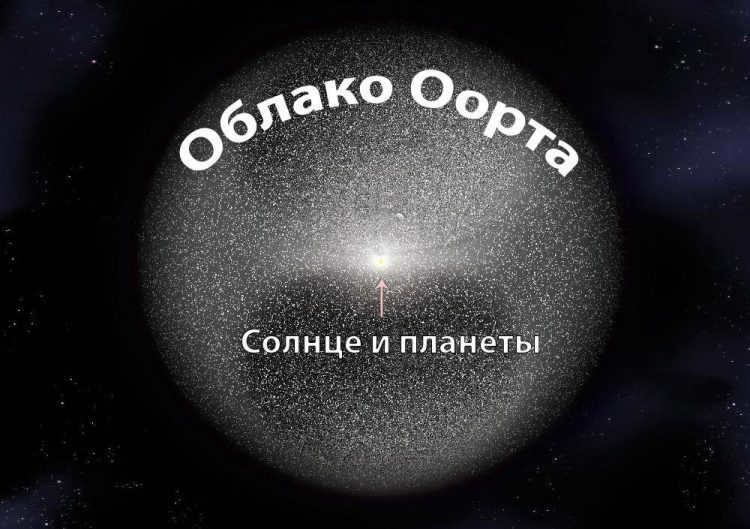
The theoretical Oort cloud is a round cluster of frozen objects (up to a quadrillion) that acts as the origin of comets with long orbital periods. The estimated distance from the Sun to the outer edges of the Oort cloud ranges from 50,000 astronomical units (approximately 1 light-year) to 100,000 astronomical units (1.87 light-years). The constituents of this cloud are thought to have originated near the Sun and were subsequently dispersed far into space by the gravitational forces exerted by the giant planets during the early stages of the solar system’s formation.
The position of Earth in the solar system
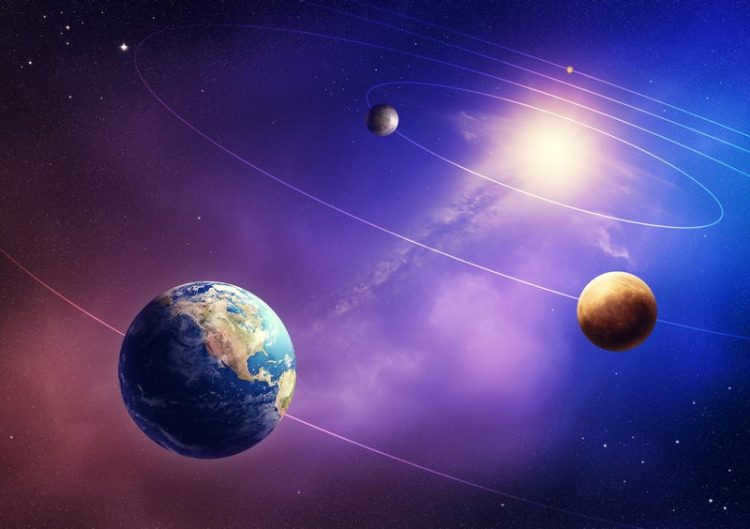
The position occupied by the Earth is truly unique and cannot be surpassed. Our galaxy is characterized by a tranquil environment, and the Sun emits a consistent and balanced amount of heat, radiation, and energy that is perfectly suited for the emergence and development of life.
It is almost as if the Earth was meticulously designed in advance:
- The atmospheric composition and geological structure are ideal.
- The background radiation and temperature regime are just right.
- The presence of water with its remarkable properties.
The presence of the moon, with its precise mass and distance, is another crucial factor for sustaining life on our planet. There are numerous other coincidences that are essential for the existence of life, and any violation of these conditions would greatly diminish the likelihood of life emerging and persisting.
The system’s stability
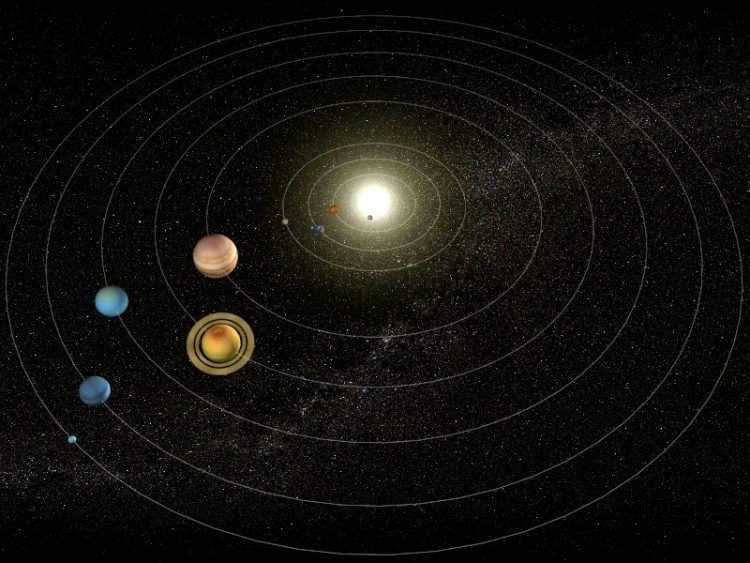
The movement of the planets around the Sun follows a unidirectional path. The planetary orbits are almost perfectly circular and align closely with the Laplace plane, which serves as the fundamental plane of our solar system. The principles of mechanics govern both our daily lives and the functioning of the solar system.
The planets are interconnected by the universal law of gravitation. Due to the absence of friction in the vastness of interstellar space, we can confidently predict that the planets will maintain their relative motion for the foreseeable future, perhaps even for the next million years. Numerous scientists, including Einstein, have attempted to predict the long-term fate of the planets within our system.
However, they all arrived at the same conclusion: the planets within the solar system will remain in stable orbits indefinitely.
Chemical composition
The chemical composition of the solar system exhibits a significant variation: celestial bodies in close proximity to the Sun consist mainly of refractory materials, while those located further away contain a higher abundance of volatile elements. This disparity indicates the presence of a substantial temperature gradient during the formation of the Solar System. Contemporary astrophysical models propose that the initial composition of the protoplanetary cloud closely resembled that of the interstellar medium and the Sun, with hydrogen accounting for approximately 75% of the total mass, helium comprising up to 25%, and all other elements constituting less than 1%.
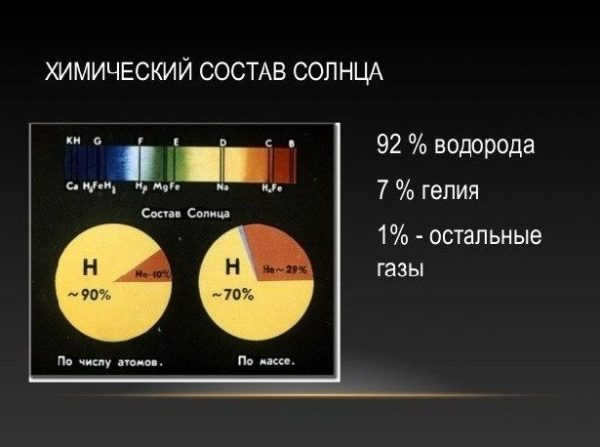
These models effectively account for the observed fluctuations in chemical composition within the Solar System.
The chemical makeup of remote objects can be deduced from their mean density. Mean density and also from the spectra of their surface and atmosphere. It would be more precise to analyze samples of planetary substance, but thus far we only have samples from the Moon and meteorites.
Through the examination of meteorites, we are gaining insight into the chemical processes within the primary nebula. However, the process of large planets forming from small particles remains unclear.
Existence of life in our solar system
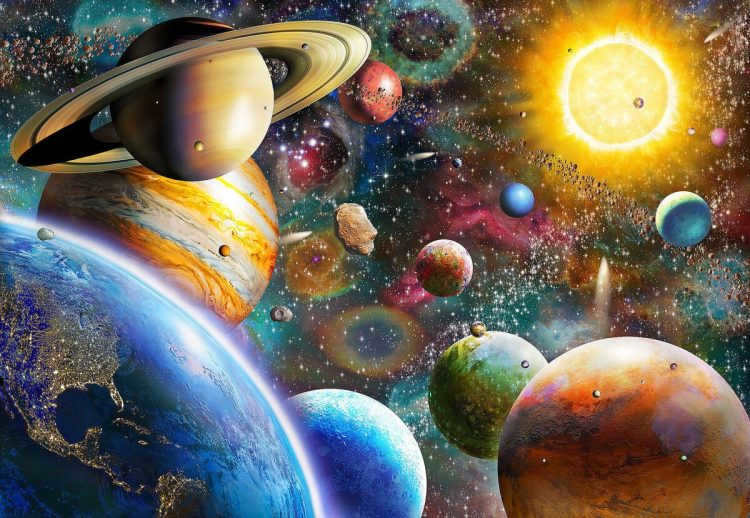
There have been speculations regarding the existence of life beyond Earth in the solar system, both in the past and potentially in the present. The development of space technology has provided us with the opportunity to directly test this hypothesis. Mercury, with its extreme heat and lack of atmosphere and water, is an inhospitable environment for life. Similarly, Venus is incredibly hot, to the point where lead would melt on its surface. The idea of life existing in the upper cloud layer of Venus, where conditions are relatively milder, remains nothing more than a fantasy. The moon and the asteroids appear to be completely devoid of life.
There has been a lot of anticipation surrounding Mars. When it was first observed through a telescope 100 years ago, the presence of straight lines, known as “canals,” led to speculation about the existence of artificial irrigation systems on the planet’s surface. However, we now understand that Mars is not conducive to life due to its cold, arid conditions, thin atmosphere, and intense ultraviolet radiation from the Sun, which sterilizes the planet’s surface.
The Viking lander’s instruments did not detect any organic matter in the Martian soil.
Nevertheless, there are indications that Mars’ climate has undergone significant changes and may have been more favorable to life in the past. Evidence of water erosion, such as ravines and dry riverbeds, can be seen in detailed images of the planet, suggesting that water once existed on its surface.
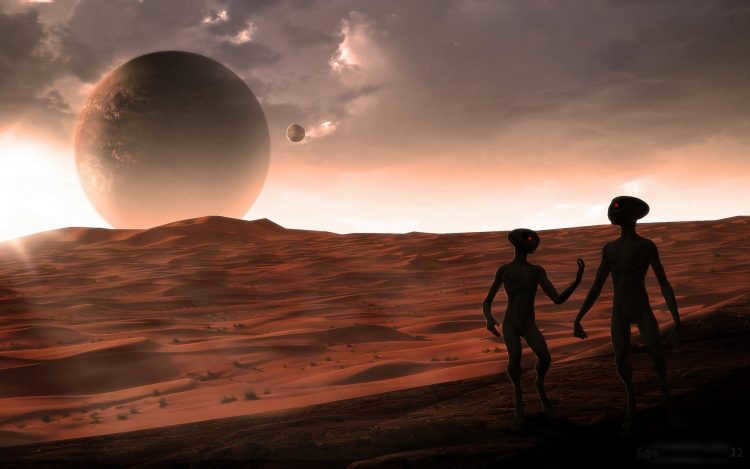
An image depicting the question “Does life exist on Mars?”
Despite the challenging nature of the atmospheres of the massive planets, it is difficult to believe that life could thrive there without a solid surface. In contrast, Saturn’s moon Titan is particularly intriguing as it not only possesses an atmosphere rich in organic components but also a solid surface capable of accumulating fusion byproducts. However, the surface temperature of Titan, at 90 K, is more conducive to the liquefaction of oxygen. Consequently, biologists are more captivated by Jupiter’s moon Europa. Europa, lacking an atmosphere, appears to harbor a subsurface ocean of liquid water beneath its icy exterior.
It is highly likely that certain comets possess intricate organic compounds that originated during the creation of our solar system. However, envisioning the existence of life on a comet is quite challenging. Consequently, currently, we lack any substantiated proof that life exists anywhere in the solar system other than on Earth.
Engaging tidbits concerning the solar system
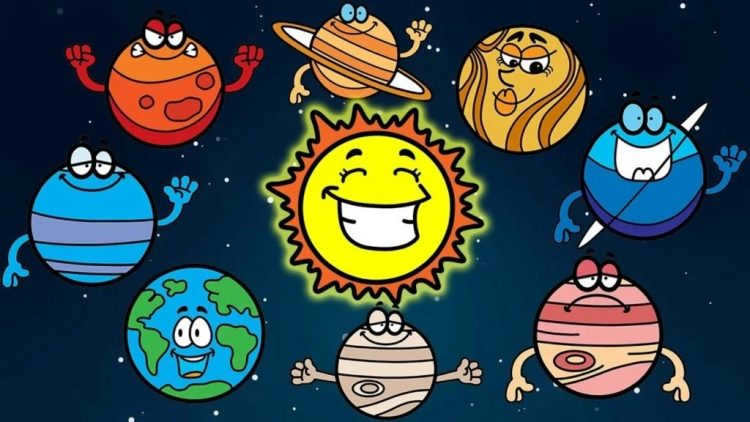
- The Sun itself accounts for about 99.86% of the total mass of the solar system.
- All the other planets in the solar system could fit between the Earth and the Moon.
- Mars is the most studied among all the planets in the solar system, while Uranus and Neptune are the least studied.
- Out of all the planets in the solar system, only Venus rotates clockwise. The rest rotate counterclockwise, except for Uranus, which rotates as if lying on its side due to its 90-degree axis angle.
- Earth, Venus, and Titan (a satellite of Saturn) are the only three celestial bodies in the solar system, apart from the gas giants, that have dense atmospheres.
- Mercury possesses a core that occupies a greater proportion of its overall volume than any other planet. Scientists hypothesize that a previous colossal collision actually stripped away its planetary crust.
- Europa, one of Jupiter’s moons, contains a greater amount of water than Earth.
- Not only does Saturn possess rings, but all of the other gas giant planets – Jupiter, Uranus, and Neptune – also have rings.
- The temperature near the Sun is higher than its surface temperature. This enigma has yet to be solved. It could possibly be attributed to the magnetic forces within the star’s atmosphere.
- Titan’s atmosphere is unique among planetary moons, as it is the only one to possess an atmosphere. Furthermore, it is primarily composed of nitrogen, much like Earth’s atmosphere.
- The variation in time and frequency of the Sun’s activity remains a perplexing mystery.
- Pluto did not complete a full orbit around the Sun until it lost its planetary status.
- Jupiter acts as a shield for our planet, protecting us from asteroids and meteorites. Its strong gravitational pull attracts these objects, causing them to burn up in its atmosphere before reaching Earth.
- The Sun emits dangerous radiation, but we are safeguarded from it by the Earth’s magnetic field and atmosphere.
- The International Space Station is the largest object in our Solar System, as well as the most expensive and historically significant.
- Our Solar System’s shape resembles a four-leaf clover.
- Many of the satellites in our Solar System are no longer active.
- In the vastness of space, our Solar System is merely a tiny grain of sand.
- According to some researchers, the solar system may have been artificially created.
- Voyager 1, which was launched in 1977, holds the distinction of being the first spacecraft to venture beyond the boundaries of the solar system.
While the Milky Way is considered an average-sized galaxy in astronomical terms, it is estimated to house a staggering number of planets – potentially up to 100 billion! It’s important to note that the majority of these planets remain unexplored, and fully comprehending our galaxy would require centuries, if not millennia, of study.
Among the planets that have been confirmed by scientists, each possesses its own unique set of characteristics and features, often vastly different from the familiar sights of Earth. So, which planets stand out as the most intriguing?
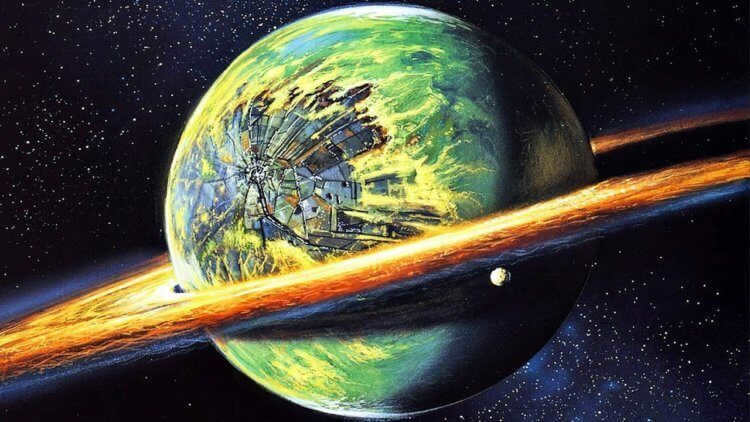
A planet with a trio of suns
Approximately 22 light-years away from our Sun lies a celestial body known as LTT1445Ab. Revolving around it are three stars, resembling replicas of our very own Sun. This planet boasts a size that is approximately 1.35 times that of Earth and a mass that is eight times greater. Additionally, it receives an astounding five times the amount of solar radiation from its neighboring stars.
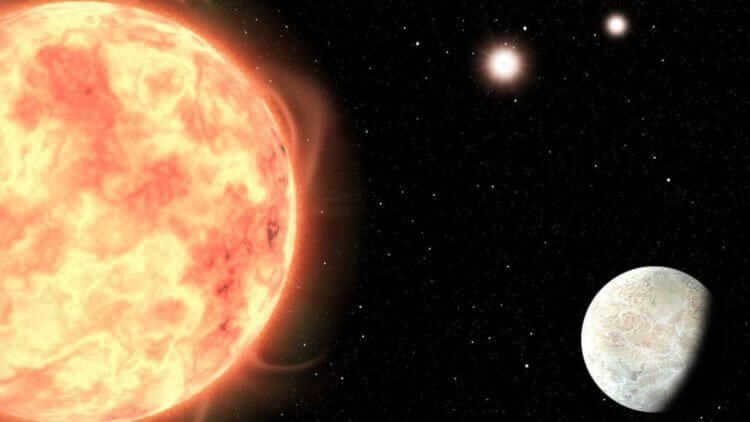
Due to its proximity, this exoplanet presents a unique opportunity for astronomers to analyze its atmospheric composition. Scientists are currently searching for indications of oxygen and water vapor, which could potentially suggest the presence of life. However, it is unlikely to find any evidence of organisms on this exoplanet, as the extreme temperatures and high levels of radiation make it inhospitable for life to thrive. Nevertheless, the presence of three “suns” has left a lasting impact.
A light-year is the distance that light can travel in one year, approximately equivalent to 10 trillion kilometers.
The planet that is most similar to Earth
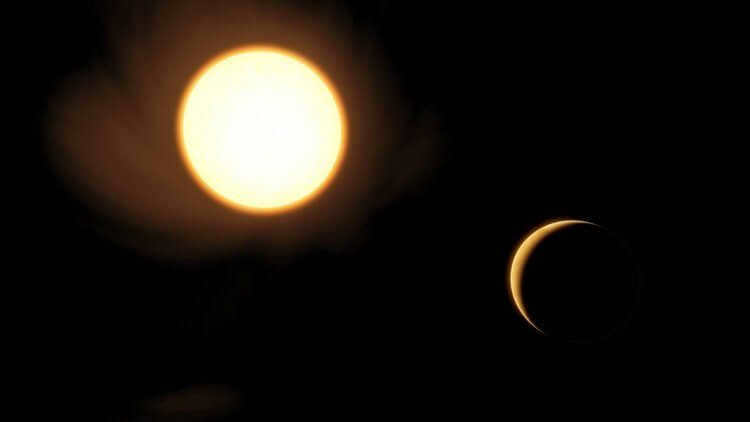
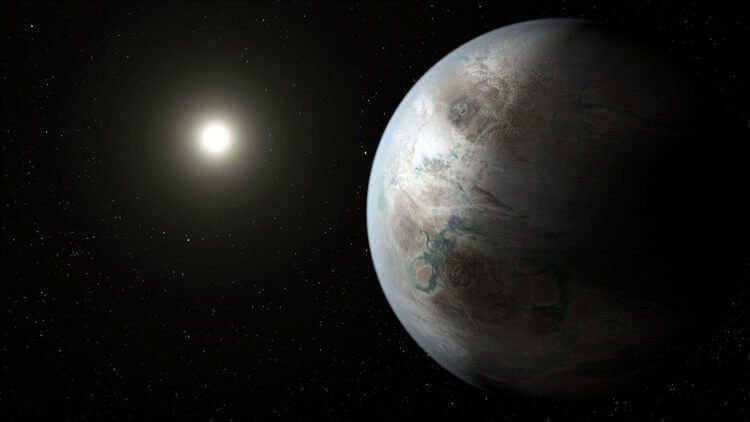
Similar to the majority of other planets that have been identified by the Kepler telescope (thus, resulting in their given names), the precise mass of this particular planet remains uncertain. However, scientists propose that it is approximately five times greater in size than the Earth.
Based on rough calculations, it is believed that the temperature on the planet’s surface can vary between -20 and +10 degrees Celsius, creating the potential for liquid water to exist.
However, this is contingent upon the specific composition of the planet’s atmosphere, which has not yet been examined by astronomers.
The planet Proxima-b, also known as Proxima Centauri b, is situated a mere 4.2 light-years away from Earth within the habitable zone of its host star, a red dwarf. Its location is truly optimal, and it is not very distant (well, almost not far at all). However, a year ago, all prospects for its colonization were shattered. Scientists have discovered that the star Proxima Centauri (the “Sun” of this planet) emitted an enormously colossal flare into space. If any form of life existed on the planet Proxima b, the flare, which was 10 times more powerful and brighter than the most intense and brilliant flare ever observed on our Sun, would have simply incinerated it.
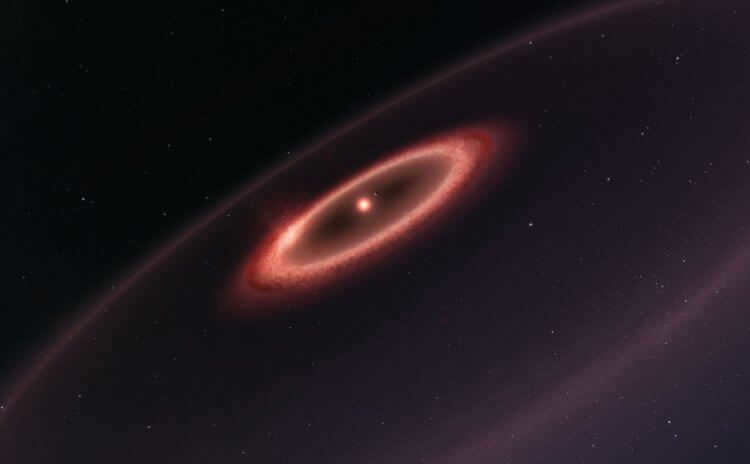
There are currently new telescopes being developed that will enable us to examine the planet Proxima Centauri b more closely and determine if it harbors any form of life (although the chances are slim). Scientists speculate that this particular planet, unlike many others, may possess a magnetic field. However, to adequately shield its surface, it would need a magnetic field 100 times stronger than that of Earth.
A celestial body containing a vast body of water within
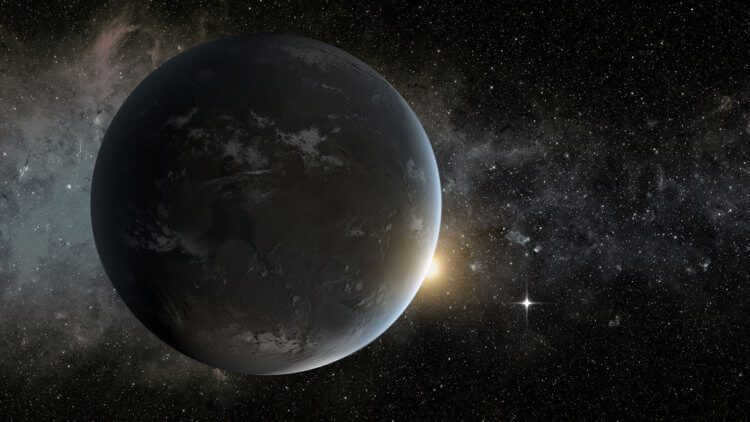
The orange dwarf star that illuminates the planet Kepler 62f is located approximately 1,200 light-years away. This star is colder than our Sun, resulting in a cool average temperature on the planet of around -30 degrees Celsius. Scientists believe that beneath the icy surface of the planet lies a hidden ocean, comparable in size to Europe, thanks to its relatively stable climate. Additionally, the planet offers stunning night views, with a constant shining presence similar to our own Venus, known as Kepler-62e. With a shorter orbital period of 267 days, this planet experiences New Year’s Eve more frequently. However, before we can enjoy these festivities, we will need to reach Kepler 62f.
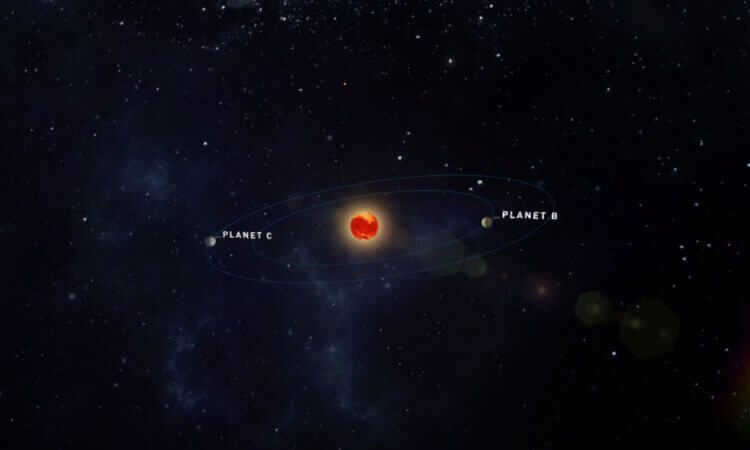
Scientists first discovered Teegarden’s star in 2003. It is a faint red dwarf, emitting about one hundred thousand times less light than our Sun. It also has a mass that is more than ten times smaller and a diameter that is seven times smaller. Teegarden b and Teegarden c are the two planets that orbit this star. Teegarden b completes a full orbit around the star in just 5 days, which is incredibly fast compared to our own Mercury, which takes 88 days to orbit the Sun. Teegarden’s star is located 12.5 light years away from us.
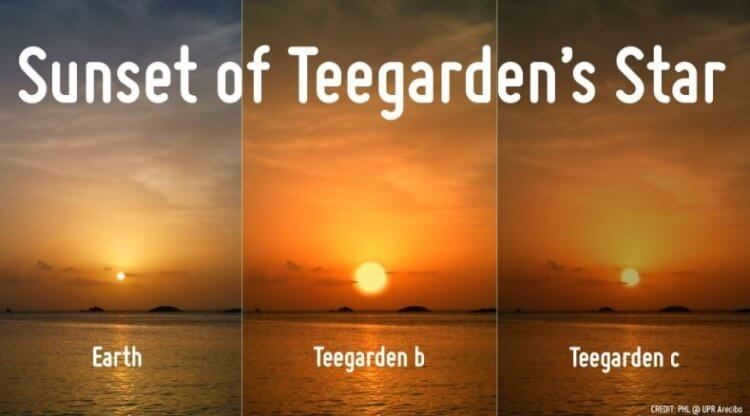
Speaking of the weather conditions, Teegarden b experiences a fluctuation in surface temperature ranging from zero to +50 degrees Celsius, with an average temperature of approximately 28 degrees. This makes the planet somewhat similar to Mars. However, astronomers speculate that there might be a possibility of liquid water on its surface. It is worth noting that it would be wise to prioritize exploring Mars before making any definitive claims about the potential habitability of other planets.
A planet resembling the fiery depths of hell
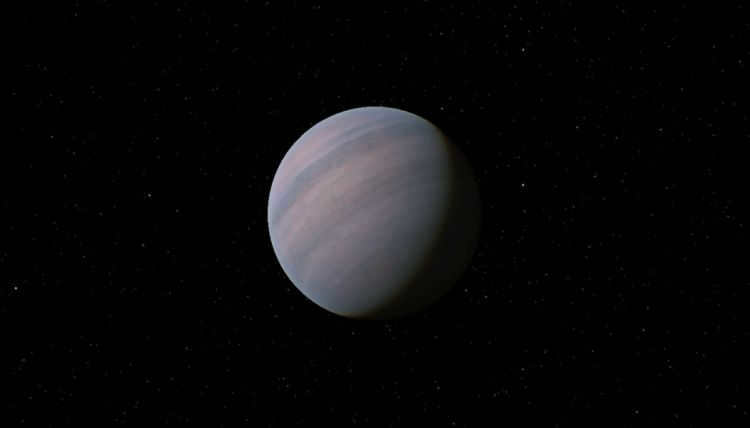
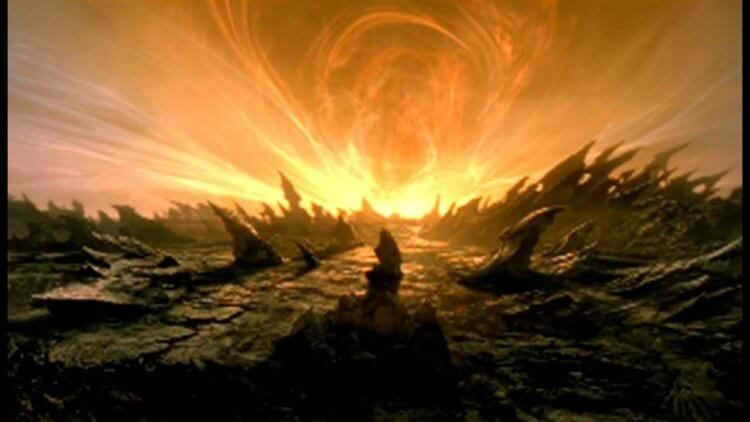
A celestial body composed primarily of diamonds
Planet 55 Cancri e is predominantly comprised of crystalline diamond. It underwent a substantial collapse, but its carbon core endured and, due to extreme temperatures and immense pressure, transformed into a colossal diamond. However, it does possess one drawback – a scorching surface temperature of 1648 degrees Celsius.
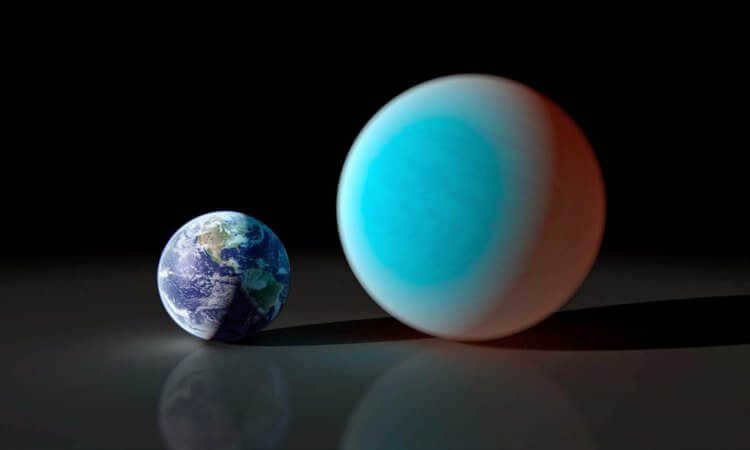
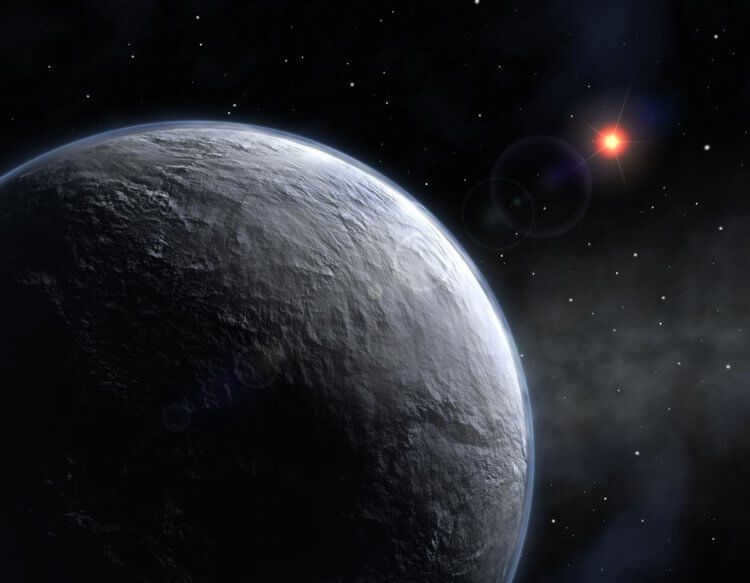
Just the surface layers of water evaporate, ensuring that the planet is constantly surrounded by vapor, while the remaining layers remain in a solid form. The environment in that place is absolutely brutal, with no presence of oxygen whatsoever – such intense humidity and high temperatures are lethal to any form of life that could potentially emerge. However, why don’t we focus on colonizing planets with warmer conditions, shall we?
A world where rain falls as glass
Not too distant from Earth (just 63 light-years away, to be precise) lies a planet known as HD 189733 b. We won’t bother trying to commit that name to memory, so let’s dive right in – what sets it apart? The answer is quite remarkable: it experiences a continuous rainfall, unlike anything we’ve seen before. However, this rain is not your typical tropical storm or hurricane; instead, it falls in the form of glass. The reason behind this extraordinary phenomenon is the planet’s atmosphere being saturated with silicon dioxide, causing the conventional raindrops to liquefy and solidify as they descend.
But the rain is only part of the story. The planet is also plagued by powerful winds, reaching speeds of up to 9,000 kilometers per hour. To put things into perspective, that’s ten times faster than a commercial passenger airplane. It appears we have yet another nightmarish world to add to our ever-growing list – certainly not a place one would wish to be caught in the midst of a hurricane.
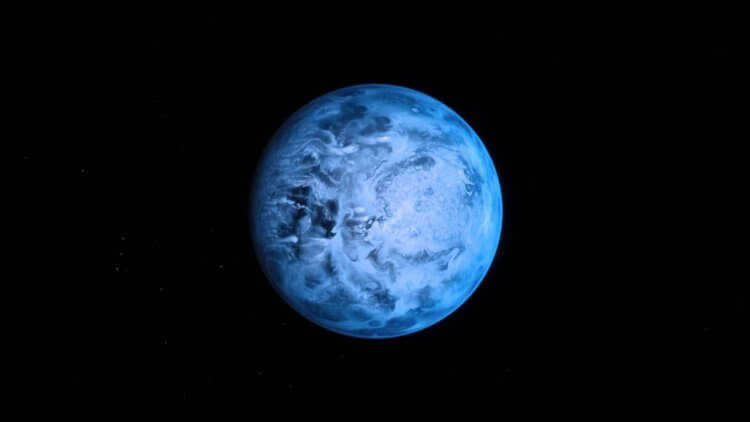
There is a wide variety of planets in our vicinity, each with its own unique characteristics. Regrettably, even the most Earth-like planets may not be habitable due to the behavior of their host stars. Additionally, these planets can differ significantly from Earth in terms of size and surface temperature. Nevertheless, it is probable that among the planets we discover, we will eventually come across one that shares similarities with Earth in terms of mass, size, orbit, and the type of star it orbits. The question remains, though, how do we reach such a planet?
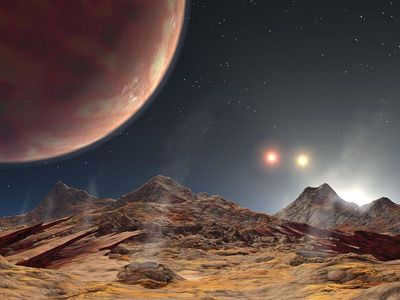
The formation of our solar system resulted in the creation of numerous planets and other celestial bodies. Similarly, as other stars underwent their own formation processes, they also gave rise to objects that eventually formed their own planetary systems.
As of the 2020s, a total of 3,163 planetary systems revolving around stars have been discovered, with 4,281 confirmed planets originating from other solar systems. Furthermore, 701 of these systems contain multiple planets.
If the task of finding and studying a distant star no longer poses an insurmountable challenge for modern science, the search for a planet in close proximity to said star remains a significantly difficult endeavor. As a result, the majority of planets discovered in other solar systems tend to be large gas giants akin to Jupiter and Saturn. These planets, located outside of our solar system, are commonly referred to as exoplanets.
Essentially, an exoplanet is a celestial body that exists beyond the confines of our own solar system, orbiting a star that is not our Sun.
Within the vastness of the Milky Way galaxy, it is estimated that there are over 100 billion planets, with approximately 5 to 20 billion of them potentially sharing similar characteristics to our very own Earth.
Planetary systems that are already identified
PSR 1257+12
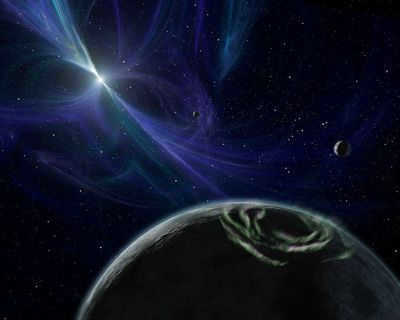
The discovery of PSR 1257+12 marked the first-ever identification of a planetary system revolving around a pulsar. This remarkable finding was made in 1991 by the renowned Polish astronomer, Aleksander Wolszczan.
Situated a staggering 1,000 light-years away from our own solar system, the pulsar PSR 1257+12 is home to four distinct planets, designated as B, C, and D. These planets bear striking resemblances to our very own Mercury, Venus, and Earth, respectively. Additionally, there is an unverified fourth dwarf planet, reminiscent of our beloved Pluto.
If there is a possibility of organic life existing on other planets, it is likely that this life would thrive beneath the protective layers of ice and water. The radiation levels on the surface of these planets would be too intense for organisms to evolve, but it is hypothesized that the Deinococcus radiodurans bacterium, which has been found on Earth, could potentially survive even higher doses of radiation. This suggests that evolution could lead to the development of organisms capable of living in the intense radiation environment of pulsars.
Ypsilon of Andromeda
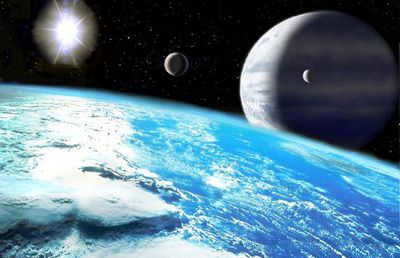

Andromeda’s Ypsilon, a star that resembles our Sun, has been discovered to possess a planetary system. Situated 43.9 light-years away, this star can be seen with the naked eye. Four planets have been identified within its orbit.
Planet B completes a full orbit in just 4.617 days and bears resemblance to our hot giant, Jupiter. Planet C, a gas giant, takes 241.5 days to orbit its star. Planet D is equivalent to 10 times the mass of Jupiter and has an orbital period of 1284 days. Additionally, the orbit of the fourth planet, E, has been calculated; it is significantly further apart from the other planets in its system.
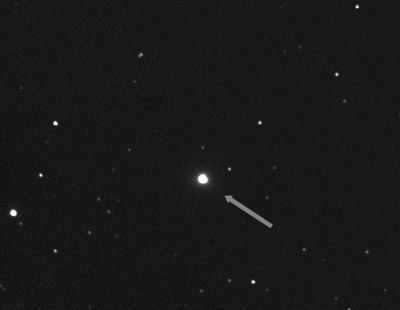
A yellow dwarf star, which can be seen with the naked eye in clear skies, bears a striking resemblance to the Sun in terms of its characteristics. It is located in the constellation Pegasus and is situated at a distance of 50.1 light-years.
The recently found planet, known as b, is classified as an exoplanet and orbits around its own Sun. It is highly probable that this planet is a gas giant and it completes one orbit in a relatively short period of 4.23 days.
55 Cancer.
can be rephrased as
The 55th zodiac sign, Cancer.
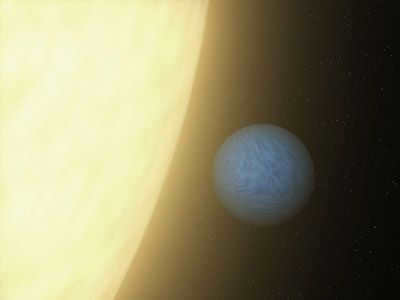
In the constellation of Cancer, there is a star similar to the Sun that is part of a planetary system. One of the planets in this system, known as planet f, has the potential to have water.
Currently, there are 5 confirmed planets in this system, but there are theories suggesting the existence of 2 more planets. One interesting planet in this system is planet e, which is a hot super-Earth. It is significantly larger than our Earth and has a high carbon content in its composition. It also has a short revolution period of 17 hours and 41 minutes.
The most recently discovered planet in this system is planet f. It is 45 times more massive than Earth, but its surface temperature is only slightly warmer due to its star being dimmer and colder than our Sun. There is speculation that this planet may have large amounts of water on its surface.
Taurus User Experience
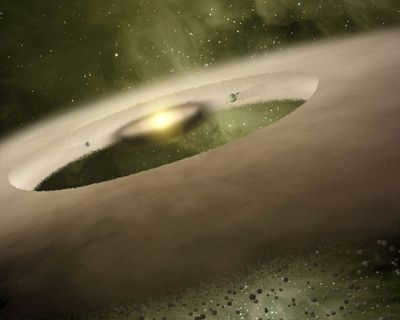
UX Taurus, a solar system in the early stages of formation, is situated 450 light-years away from our Sun. The discovery of this system was made possible by the Spitzer spacecraft, equipped with a highly advanced infrared telescope, which is currently in orbit around Earth. Astronomers were able to observe a gas and dust disk surrounding the star at the center of this young solar system. What makes this finding truly remarkable is the presence of a massive gap in the disk, a feature not typically seen in other protoplanetary disks. This unique observation provides a captivating glimpse into the birth of a new solar system, with the potential for the formation of planets in the near future.
Exoplanets in different star systems
GJ 1214 b
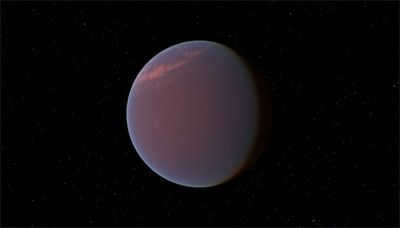
GJ 1214 b is an exoplanet located in the Serpens constellation, approximately 40 light years away from Earth. This planet has the potential to possess an ocean, making it a fascinating subject of study. Compared to Earth, GJ 1214 b is 2.5 times larger and 6.5 times more massive. Its year, which is only 36 hours long, is calculated based on certain estimations. Scientists believe that approximately 75% of the planet’s composition is water, while the remaining 25% consists of rocky materials. Additionally, it is expected to have an atmosphere composed of hydrogen and helium. The unique properties of this exoplanet are attributed to its thick watery vapor atmosphere, which maintains a high temperature of 200 ° C. Researchers speculate that the water on GJ 1214 b exists in an unusual state, such as “hot ice” or “super liquid water,” unlike anything found on Earth.
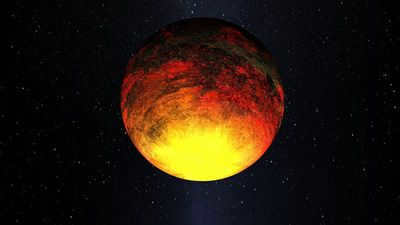
Kepler-10 b is the tiniest of the exoplanets found by the Kepler telescope. It is classified as an iron planet due to its density and has a mass 1.4 times larger than Earth. It also has a similar rotation period to our planet, completing one rotation every 0.84 Earth days. However, the surface temperature of this planet is incredibly hot, reaching up to 1527°C.
Gliese 667 Cc
is a unique exoplanet that exists in the Gliese 667 system. It is an exceptional celestial body worth exploring.
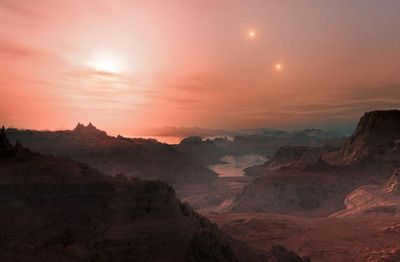
Gliese 667 Cc is the second celestial body orbiting the red dwarf star Gliese 581 in the Libra constellation, located 20 light-years away. This planet has the potential for a surface temperature comparable to Earth’s, reaching up to +27 °C, thanks to the presence of approximately 1% CO2 in its atmosphere, which contributes to the greenhouse effect.
The star that Gliese 667 Cc orbits is not particularly luminous since it is a red dwarf, but the planet benefits from its close proximity, receiving nearly 90% of its energy (similar to the amount of energy Earth receives from the Sun). Consequently, the conditions for life on this planet are quite favorable. Due to the planet’s close distance to its star and the star’s considerable size, the sky above Gliese 667 Cc’s surface takes on a reddish hue.
Gliese 581 d
is a unique exoplanet.
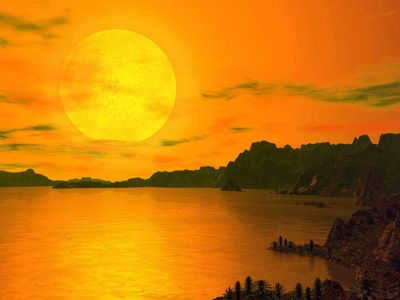
Gliese 581 d is the third planet orbiting its red dwarf star, Gliese 581, and it has the potential to be habitable. It is significantly larger than Earth, measuring twice its size. One interesting aspect of this planet is its unique atmosphere, which features high-altitude dry ice clouds that could potentially lead to precipitation at lower altitudes.
Despite its close proximity to its star, Gliese 581 d benefits from the fact that its star is a red dwarf, meaning it does not receive an overwhelming amount of heat. As a result, the surface temperature of the planet remains relatively low, hovering around 0°C. During the day, a large dim star casts a dusky orange-red hue over the landscape, creating a captivating visual display.
Gliese 581 g
is a unique exoplanet that has been discovered in the Gliese 581 system. This planet is of particular interest due to its potential to support life. It has a mass similar to Earth and is located in the habitable zone of its star, which means that it could have liquid water on its surface. Scientists have been studying Gliese 581 g in order to learn more about its atmosphere and the potential for life. This exoplanet has captured the imagination of scientists and the public alike, as we continue to search for signs of life beyond our own planet.
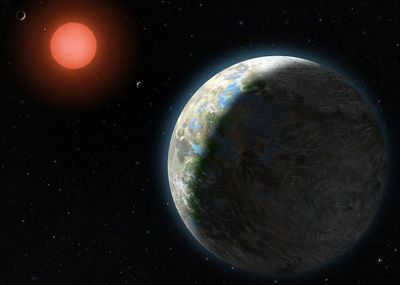
Incidentally, Ragbir Bhatal, an Australian scientist who is part of the SETI project dedicated to the exploration of alien civilizations, has reported that he observed intense bursts of light emanating from the planetary surface in December 2008, resembling the emissions of a laser. Regrettably, certain scientists have refuted this hypothesis.
Kepler-20 e
can be rephrased as follows:
Kepler-20 e
is known as the exoplanet Kepler-20 e.
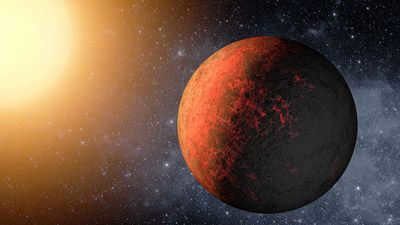
Kepler-20 e is the exoplanet that comes closest in size to our Earth. However, due to its extremely close distance to its sun, the surface temperature can reach a scorching 760 ° C, and a year on the planet lasts just 6 days.
HD 85512 b
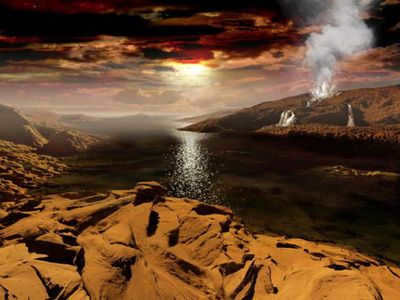
HD 85512 b is a planet situated within the habitable zone, where conditions have the potential to support life. This planet can be found in the Sail constellation, approximately 36 light years away from us. It is heated by the warm rays of its orange dwarf star HD 85512. The surface temperature is estimated to be around 25 °C, but due to the presence of a greenhouse effect similar to Earth’s, it could reach up to +78 °C. The planet is highly likely to have liquid water. The star that this planet orbits is 8 times dimmer than our Sun, giving the planet a moderate orange hue. However, due to its close proximity to the star, it receives enough heat and light to support the development of organic life.
The Exoplanet Kepler-22 b

Kepler-22 b is situated approximately 620 light-years away from our Earth and is known as an oceanic planet. It completes an orbit around its star in about 290 days, and if the planet possesses an atmosphere, the temperature is estimated to be around +22°C, which is considered favorable for supporting life. However, it is important to note that Kepler-22 b is likely classified as a mini-Neptune, with its entire surface being composed of oceanic waters. Consequently, any potential life on this planet would likely be aquatic in nature.
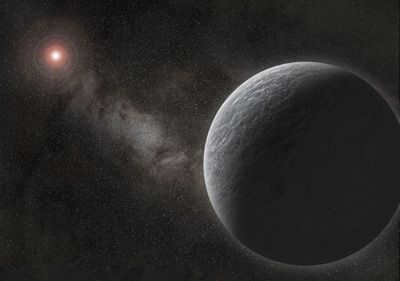
GD 66 b is most likely a helium exoplanet that revolves around the white dwarf GD 66. The exoplanet is expected to have extremely cold temperatures and a partially dark appearance because of the white dwarf’s low luminosity.
HD 188753 Ab

HD 188753 Ab is a unique exoplanet located in the Swan constellation, known for its extraordinary three-star system. This gas giant orbits its host star every 3.35 days, offering a breathtaking view from its surface. The main star, HD 188753 A, shines brightly, illuminating the planet with its intense light and providing a significant source of heat. Additionally, the system includes two other stars: the comparatively dim orange dwarf, HD 188753 B, and the faint red dwarf, HD 188753 C. This peculiar arrangement of three suns makes HD 188753 Ab a truly remarkable celestial body.
Alpha Centauri B b
can be paraphrased as “The second planet of the star Alpha Centauri B”.
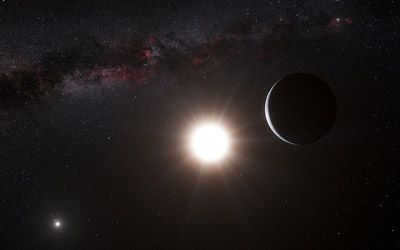
Alpha Centauri B b is the nearest planet to Earth in the Alpha Centauri solar system, located approximately 4.37 light-years away from our Sun. This planet, classified as a super earth, orbits its own sun-like star, Alpha Centauri B, at a distance of around 6 million km. As a result, the surface temperature is an extremely high 1200 °C. If one were to gaze upon the starry sky from Alpha Centauri B b (as depicted in the image), they would see a massive, fiery red star alongside a small, radiant dot in the upper right corner – our very own sun.
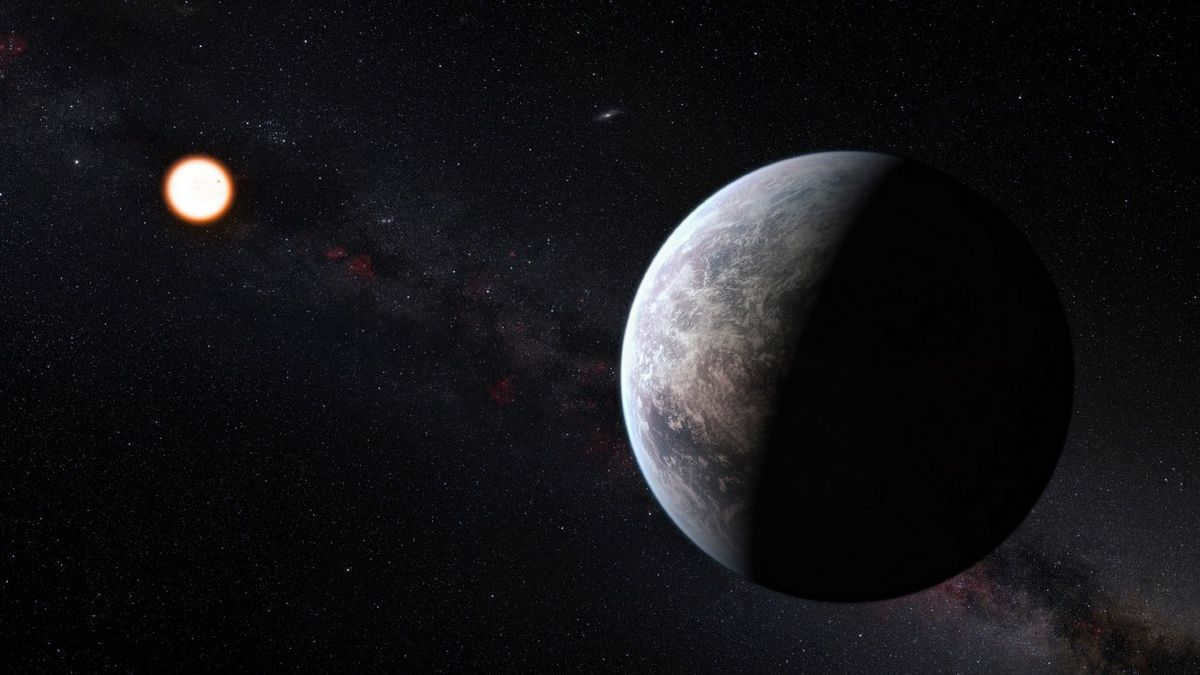

On a cloudless night, when there is no light pollution, we can easily observe numerous stars in the night sky. However, this is just a small fraction of the total number of stars in our Galaxy.
What’s particularly remarkable is that most of these stars have their own planetary systems. This naturally leads to the question: how many planets are there? The answer to this question requires us to use our knowledge and make some calculations based on certain assumptions. It is worth noting that despite the discovery of thousands of exoplanets (planets outside our solar system), we have only thoroughly studied our own system. Therefore, it is possible that the number of planets in other star systems may be smaller or, conversely, much greater than in our own system.
So, let’s suppose that the average value of the eight planets in our solar system (excluding dwarf planets, centaurs, and other relatively large bodies) represents the standard. Next, we will have to multiply that amount by the number of stars in the Milky Way.
The quantity of stars
Related articles:
It is important to mention that there is some debate surrounding the exact number of stars in the Milky Way. Astronomers are unable to directly count the stars and must rely on rough estimates. This is due to the fact that we cannot view the Milky Way from a side angle, making it difficult to see the stars on the opposite side of the galaxy, especially considering its spiral structure with a central bulge.
Therefore, determining the number of stars involves calculating the galaxy’s mass and estimating the portion of that mass made up by stars. Based on available data, scientists have approximated that the Milky Way contains anywhere from 100 to 400 billion stars (although some theories suggest that this number could reach as high as one trillion).
Therefore, it can be stated that there are approximately 800 billion to 3.2 trillion planets in the Milky Way galaxy! However, to determine the number of habitable planets, we need to consider the exoplanets that have been discovered so far.
Exoplanets capable of supporting life
As of October 2018, astronomers have confirmed the existence of 3,851 exoplanets. Some of these planets have been directly observed through a process called direct imaging. However, the majority of planets have been detected indirectly using the radial velocity method and the transit method.
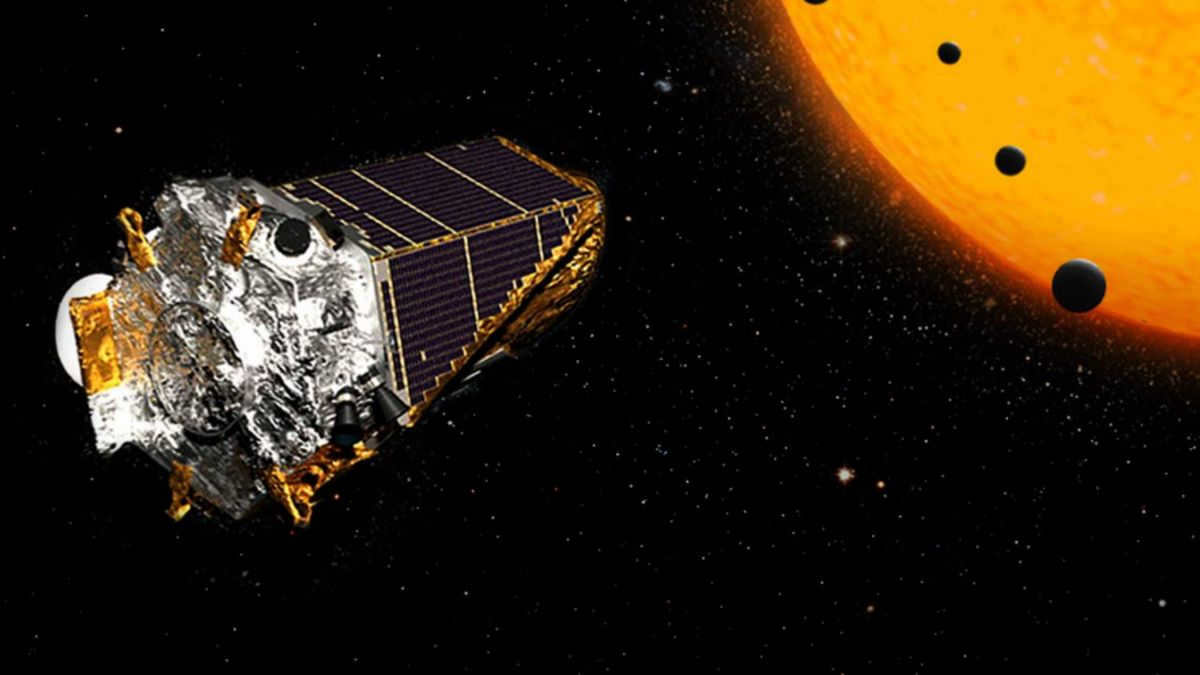
During its initial four-year mission, the Kepler space telescope captured images of approximately 150,000 stars, primarily consisting of M-class stars. These stars, also referred to as red dwarfs, possess low mass and emit dim light, making them challenging to study.
Upon entering its second phase, known as K2, in November 2013, Kepler shifted its focus to investigating larger stars that are nearly as luminous as our Sun. These stars belong to the K- and G-class categories.
Based on a recent analysis conducted by NASA, it is estimated that around 24% of the M-class stars observed by Kepler could potentially harbor planets capable of supporting life. These planets have a maximum radius roughly one and a half times that of Earth.
Simultaneously, according to the analysis of the K2 phase, it is indicated that approximately 25% of the more massive stars might also possess planets resembling Earth. In combination, these three categories of stars constitute approximately 70% of the stars that exist within the Milky Way galaxy. Consequently, the count of potentially inhabitable planets commences at a staggering 17 billion!
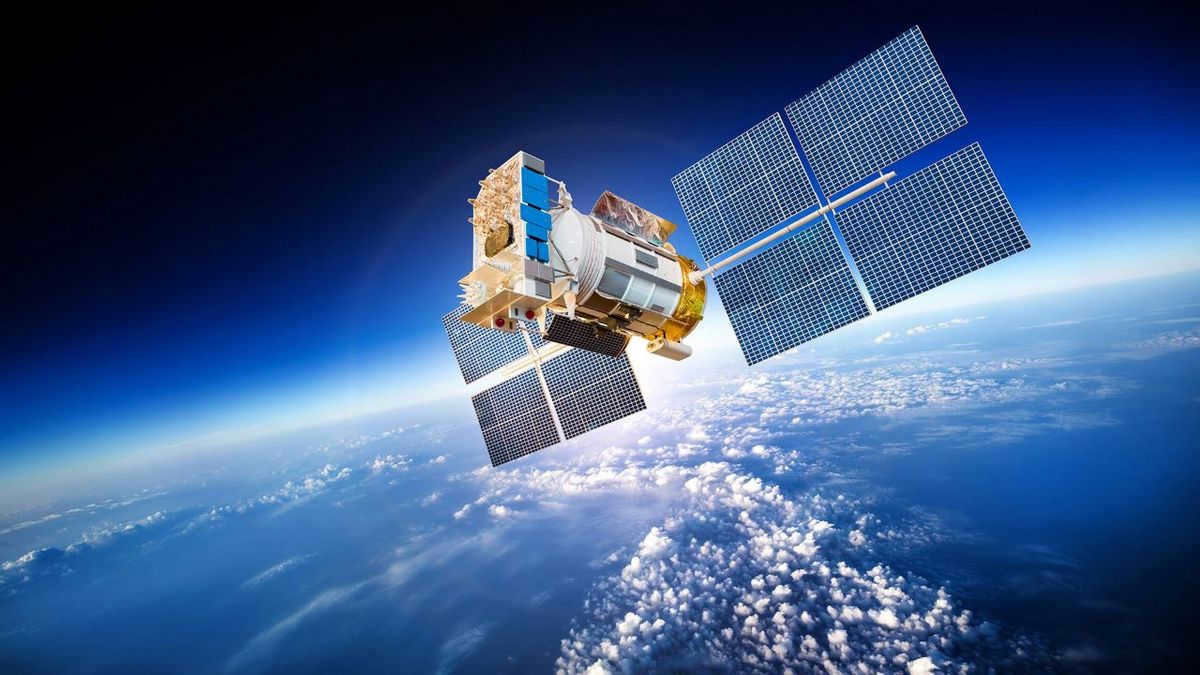
In the upcoming years, upcoming instruments like the James Webb Space Telescope (JWST) and the TESS space telescope will have the capability to detect smaller planets orbiting faint stars, and maybe even ascertain the presence of life on any of them.
Data obtained from these missions will provide us with more accurate calculations of the overall number of planets, which in turn will enhance our ability to estimate the number of potentially habitable planets. Nonetheless, even if the number is reduced by ten times, the likelihood of extraterrestrial intelligence remains significantly high!

